Property of the Week: Business Premises in UNESCO World Heritage Site
January 17, 2021 - Trade like a Roman Emperor with your very own business property in Diocletian's Palace, the very heart of Split.
It all started when one man thought it would make for a nice location for a retirement home...
That man happened to also be a Roman Emperor, and the name of Emperor Diocletian has been immortalised in Dalmatia by the impressive retirement palace which bears his name, and which has been a UNESCO World Heritage Site since 1979.
There are also few places in Croatia which have undergone such a transformation as the palace in the 18 years I have been living in Croatia. When I first came, Split was known as the 'Gateway to the Islands', and the warren of tiny streets and alleys were much less lively - and even a little intimidating in winter.
As tourists discovered the magic of Split, so too did the nature of Diocletian's Palace change once more in its 1700-year history. Boutique hotels, AirBnBs, restaurants and wine bars, arts and craft shops. On every corner, something new to experience, buzzing with life. Diocletian's Palace became a hit.
And property in Diocletian's Palace was in big demand - and short supply.
One such offer has just come on the market, our property of the week, introduced by Trgostan, the oldest real estate agency in Split:
Split, Center - attractive business premises 33 sqm in the Diocletian's palace
Attractive business premise of 33 sqm within the walls of the Diocletian's palace, in Dominisova street, whole ground floor of an old stone house, in excellent condition, ideal for different purposes, possible to rearrange it into an apartment - excellent business/rental potential.
Price 135,000 euro. For more information, and to book a viewing, click here.
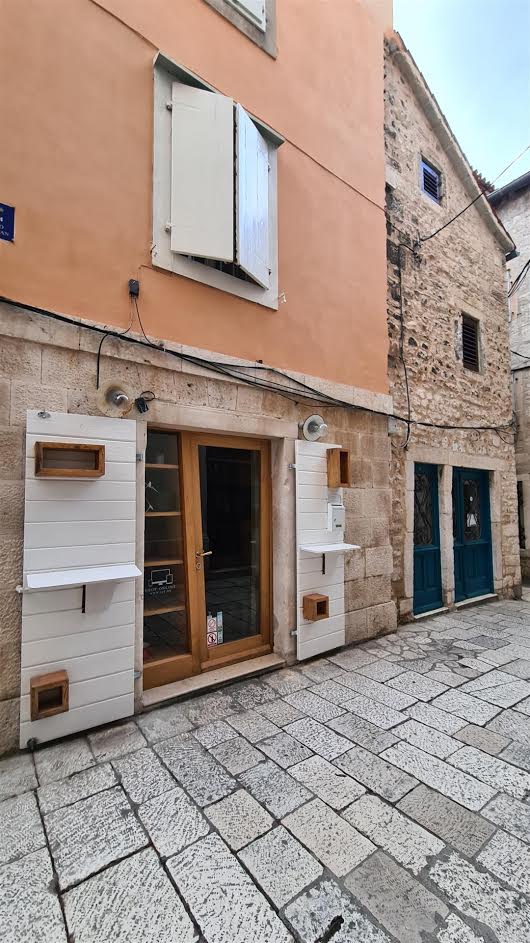
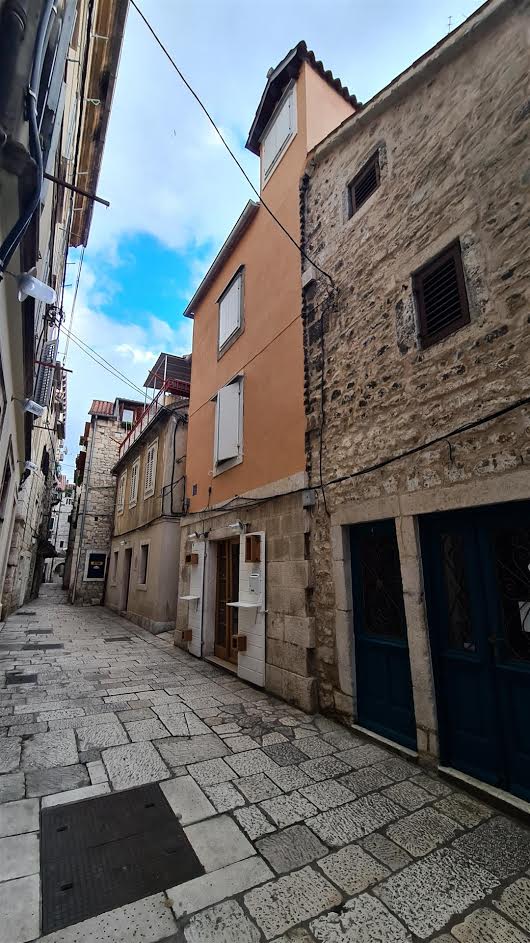
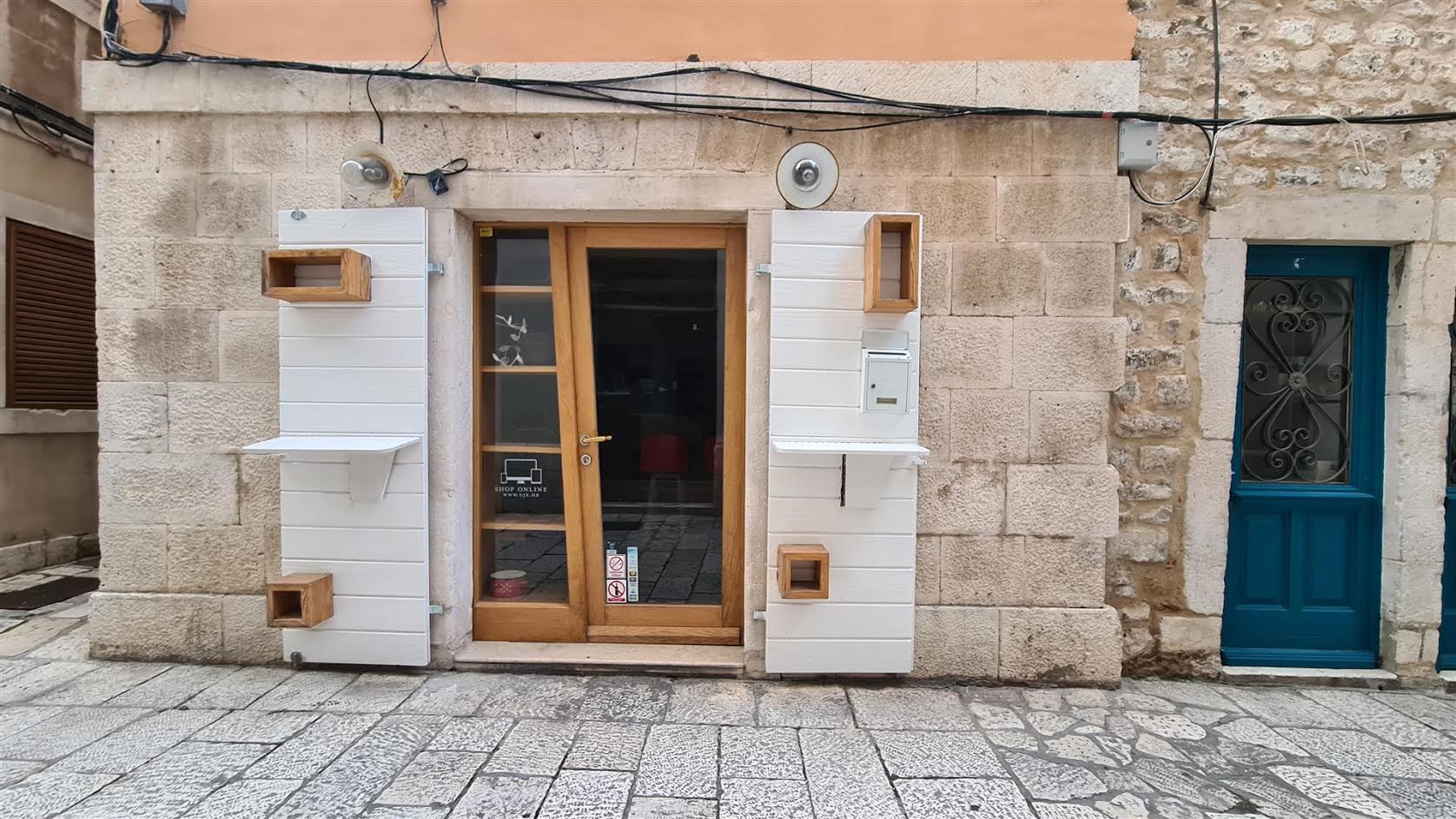
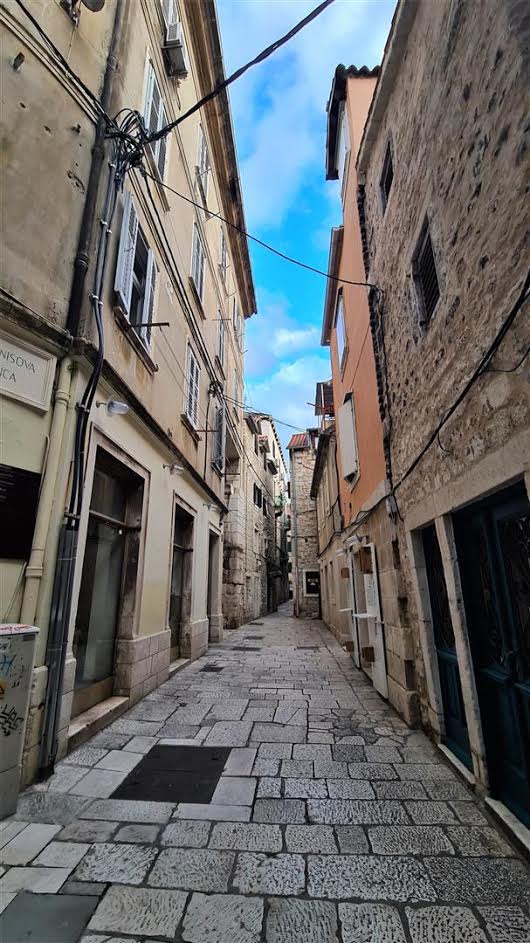
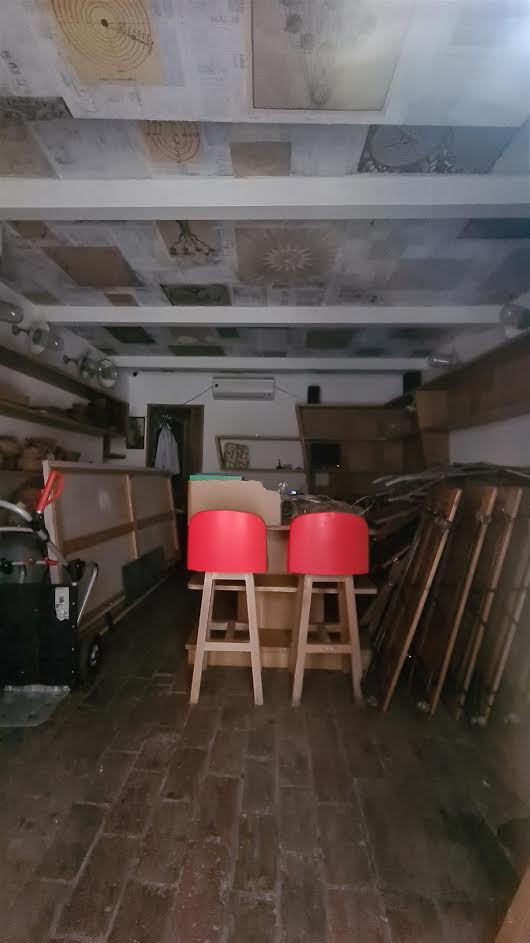
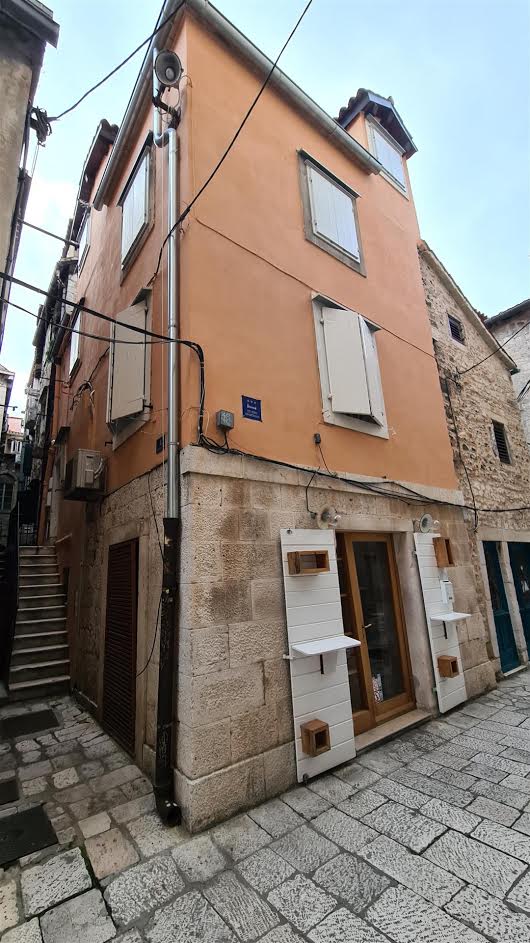
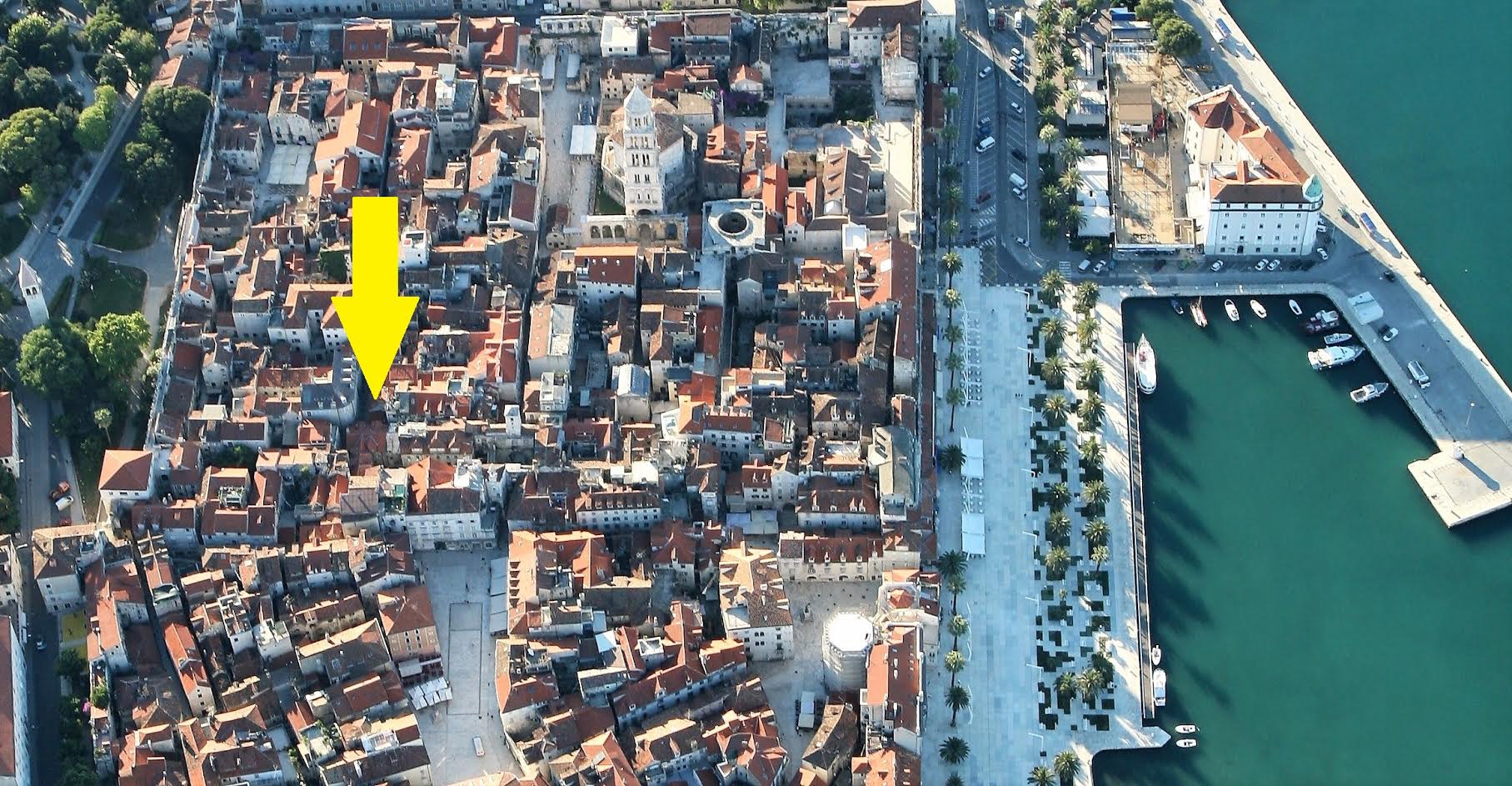
City of Split, Owen Wilson, and Salma Hayek Star in New 'Bliss' Trailer
January 13, 2021 - The City of Split, Owen Wilson, and Salma Hayek are the stars of the new 'Bliss' trailer, released by Amazon Prime on Tuesday.
Amazon Prime will release the new film 'Bliss' on February 5, 2021. The sci-fi drama by director and screenwriter Mike Cahill transported Salma Hayek and Owen Wilson to Split back in July 2019. Wilson was often photographed with locals, which you can read more about HERE.
On Tuesday, the trailer for the film was finally released, and in addition to the two Hollywood stars, Split also takes the spotlight.
The main characters of the film are the unfulfilled Greg played by Owen Wilson and the mysterious Isabel embodied by the great Salma Hayek. In short, the two believe they live in a parallel, fictional reality, but that their perfect world soon begins to fade and turns into something utterly ugly. They both have to decide where they actually belong and what’s real in all of this, reports Telegram.hr.
The premiere of the film has been announced for February 5, 2021.
To read more about lifestyle in Croatia, follow TCN's dedicated page.
Earthquake in Split: A Look at How Petrinja Scenario Would Affect City
January 11, 2021 - What would happen if there was a Petrinja-scenario earthquake in Split? A closer look.
Slobodna Dalmacija writes that because earthquakes cannot be prevented, the implementation of measures to mitigate the consequences and preparedness of the community in the event of their occurrence is essential.
Split is located in the earthquake intensity zone of 7 and 8 degrees according to the MSK scale, which can cause material damage, landslides, cracks, and very likely human casualties.
After the devastating earthquakes in central Croatia, seismologists warn that increased seismic activity of subsequent earthquakes should be expected in the next year. The seismically "calmest" situation is in Istria and eastern Croatia, while Dalmatia is at the top of earthquake zones.
According to experts, the maximum intensity of earthquakes that can hit Dalmatia ranges from 6.3 to 7 on the Richter scale.
So, how will Split protect itself or prepare for a disaster?
After Petrinja, it is clear that it is necessary to build an early warning system and educate and train the operational forces of the Civil Protection system. It is essential that in the basic operational forces of the Civil Protection (CZ) of the city of Split, there are people trained to rescue in ruins, according to international certificates.
"As part of the Public Fire Brigade, a Specialist Rescue Team of 22 people with certificates and a search dog has been formed. Among them is one person with the highest level of training for staff leadership and command in crises and a person trained for the third level of rescue from the rubble. There are five search teams in the Croatian Mountain Rescue Service, consisting of five people with five search dogs. All major fire brigades in the Republic of Croatia have such teams, and in case of need, the fire system is activated through the Civil Protection Headquarters. The teams come to the area affected by the disaster," the city administration responded with specific figures.
General-purpose units and Civil Protection commissioners provide support to the core operational forces. In the event of an earthquake, their task would be to inform the local population and distribute instructions for action, accept vehicles at the gathering place, help with evacuation, accommodation, and care of vulnerable populations, rescue assistance terrain, logistics at reception points, food distribution, and delivery of the most necessary means of subsistence.
During October and November (last year), 83 commissioners and deputy commissioners of the Central Committee and members of general-purpose units were trained at the Regional Civil Protection Training Center in Divulje, and the training included two teaching units, "Civil Protection System" and "Measures and activities in the civil protection system." The training is planned to continue, announced the City. They added that members of the basic operational forces have their necessary equipment, and jackets, masks, gloves, and shovels are provided for the commissioners and deputy commissioners of the Central Committee. Radio stations have been provided to network the Civil Protection coordinators in the city districts and local committees with the Headquarters.
The action plan of the Central Office of the City of Split also contains a list of legal entities in the civil protection system with accommodation capacities and food security (the statically correct one will be used) and a list of locations for tent settlements.
"The mobilization assembly point of the Civil Protection Headquarters is the City Administration building. The reserve mobilization assembly point is the building of the Public Fire Brigade on Hercegovačka Street. In the event of an earthquake, the Headquarters is immediately convened, and each of the components of the Civil Protection system is given its tasks. However, according to the experiences of those who've experienced a devastating earthquake, it is important to enable operational forces from the outside so that the system becomes operational as soon as possible," the City states.
To be as prepared as possible for a devastating natural disaster, in January 2019, the City Council adopted a Major Accident Risk Assessment for the city of Split, which identified threats: earthquakes, floods, open fires, extreme temperatures, epidemics and pandemics, and other traffic accidents.
For each of these risks, a description of the scenario, impact on social values, preventive measures, and response measures is given.
To reduce the damage in an earthquake, the preventive measure is anti-earthquake design and construction of buildings following the relevant technical regulations and Croatian and European standards. That assessment states that dwellings built after 1964 are in principle resistant to earthquakes of intensity up to 7 degrees on the MKS. scale. Due to the years of construction, the city is divided into three zones. The first is the oldest and most endangered, which is the area of the old town, the districts of Grad and Varoš. The second is right next to the city center, includes the neighborhoods Lučac, Manuš, Bačvice, Gripe, Lovret, Meje, Spinut, and Bol, and the third zone is the area of other city districts where most of the facilities were built from 1964 to 1985.
Given the time of construction by zones, there are estimates of the degree of damage to apartments of various categories in an earthquake with an intensity of 8 degrees according to the MSK scale.
In the first zone, the districts of Grad and Varoš, it is estimated that a total of 1708 apartments would be so damaged that they would no longer be possible to live in. In the second zone, 2475 apartments would suffer severe damage and thus become unsafe. In the third zone, it is estimated that 2449 apartments would no longer be habitable after such a devastating earthquake. It is estimated that 635 apartments would be so damaged in all Split local committees that it is no longer possible to live in them.
The highest probability is that an earthquake hits the Split area with an intensity of 5 degrees according to the MSK scale. When looking at the estimates of the risk of major accidents, an earthquake of this magnitude would not have significant consequences for human life and health. The consequences for the economy, social stability, and politics would be small.
However, in an earthquake measuring 8 on the MSK scale, which is extremely unlikely, it is predicted that 179 people would lose their lives, and more than a thousand and a half inhabitants would be injured. Had such an earthquake occurred during the tourist season, the number of injured would have increased by another 650 and the number of dead by 73.
Based on the Risk Assessment of Major Accidents, the City of Split's Civil Protection Action Plan was prepared and adopted by Mayor Andro Krstulović Opara in July 2019.
The mentioned Plan, among other things, contains an elaboration of civil protection measures concerning the type of threats that are relevant for the City of Split, the actions of Civil Protection operational forces in eliminating the consequences of threats from their own risk assessment and providing assistance between different hierarchical levels of the civil protection system in the event of a major disaster and catastrophe.
Therefore, in case of an earthquake, a rescue and clearing organization team was developed, as well as tasks of participants and operational forces of Civil Protection that have the capacity to rescue from the rubble, the organization of protecting critical infrastructure, and cooperation with legal entities to ensure continuity of their activities. Furthermore, they have also developed the organization of firefighting, regulation of traffic, and insurance during interventions, medical assistance and medical care, evacuations, rescue and evacuations of vulnerable groups, implementation of care, the humane remediation and identification of the dead, hygienic and epidemiological protection, provision of food and drinking water, centers for informing the population, accepting human and material assistance, and providing psychological assistance.
For more on the Petrinja earthquake and to see how you can donate money, food, humanitarian, sanitary, and material aid, follow our dedicated section.
Renovation Begins of Traditional Stone Houses on Marjan Split
January 10, 2021 - The renovation of traditional stone houses on Marjan in Split has begun as part of the 'Marjan 2020' project.
HRT reports that the works are part of a large project which should be completed by the end of the year and includes the reconstruction and revitalization of the Botanical Garden, a new observatory on the Saddle (Sedlo), new bike and hiking trails, trim trail renovation, and complete multimedia signage.
The concrete roof has been removed from the stone house, which was once built in the port of Lubin. Although they have not served their purpose for a long time, each house has a name: Saddle, Baba Marta's House, Pojevina, Firefighting road, Nursery, and Police (Sedlo, Kuća babe Marte, Pojevina, Protupožarni put, Rasadnik, Policijska.
"This part includes works exclusively in the area of Bene, while we will move to the area of the top of Marjan in the next period," said Ante Šustić, the manager of the reconstruction project.
By the end of October, all seven Marjan houses will look like they were built - and will be a real example of traditional folk construction, says HRT.
"The old plaster should be removed, some should be grouted, and it will mostly be a cover of old stone slabs. This will be done by masters who are a little older and who have already done it," said Zdravko Budimir, a representative of the contractor.
The cadastre from 1831 shows that there were vineyards, olive groves, orchards, and pastures on the peninsula's southern slopes and part of the northern ones. As everywhere in Dalmatia, chapels and shelters for people and cattle were built next to them. After the renovation, the houses will be used for the education and promotion of Marjan.
"This is a very extensive project, Marjan 2020 - the hill of the past, an oasis of the future, which provides for numerous activities, in fact, the restoration and addition of content within the Marjan Forest Park. We are renovating the training area, the children's city, new walking and cycling trails will be built, the trim trails will be renovated, so we will renew a lot of these facilities through the project," said Radojka Tomašević, head of the International and European Projects Service of the City of Split.
The project's total value is 26 million kuna and most of it is supported by non-refundable European funds.
You can see the video on HRT.
To read more about lifestyle in Croatia, follow TCN's dedicated page.
Small Renters in Split Especially Hit by COVID-19, Turning to Long-Term Tenants and Students Instead
January 10, 2021 - Small renters in Split are especially struggling from the effects of COVID-19, and many are deregistering their accommodations as tourist facilities.
It's no surprise that 2020 was uneventful when it comes to the number of tourists, resulting in an increased number of deregistered private accommodations, reports Slobodna Dalmacija.
Namely, many private accommodation owners have recorded fewer or no guests due to the coronavirus pandemic. Some are deregistering as tourist accommodation, while others are trying to get tenants for a limited period of stay in the facility, no later than June 1.
"In 2020, in the area of Split-Dalmatia County, 3266 citizens requested to cancel the provision of catering services in the household," says Stjepanka Marčić, head of the Department of Tourism in Split-Dalmatia County, which currently has 26,523 active landlords. Their total number decreased by 11 percent compared to the period before the pandemic.
The highest number of deregistrations was recorded in Split, where 1,200 landlords requested deregistration, i.e., 15 percent of the total number of registered. The least are on the islands of Hvar and Vis, five percent of them," said Stjepanka Marčić.
Citizens submitted requests to deregister throughout the year, most intensively during December 2020.
The most common reason for deregistering is that in 2020, they did not have a single guest, while at the same time, they had to pay taxes, tourist tax, and tourist membership fees. Many decided that it is not worth bearing the cost with no income.
This is confirmed by one landlord, who decided to deregister his apartment in the wider center of Split last fall.
"I paid half the sojourn tax, half was waived. And a membership fee to the Tourist Board, and two lump sum installments, and not a single guest. Not a guest, not even an inquiry. If I hadn't deregistered the apartment in October, I would have paid the last installment of the lump sum. It doesn't make sense," said the Split landlord. At the moment, he is not even thinking about whether to reactivate his apartment for tourist purposes.
"Who knows what will happen in a month? Who can be smart here? They will say that a new strain of corona has come again, and everything will close everything again. Vaccines and masks, and who has been vaccinated twice or thrice.
Of course, in June everything will reopen due to the tourist season and nothing will matter anymore nor will they control who enters the country. And then the locals will shut us down again in October," he added.
The Split-Dalmatia County Tourism Department is reluctant to predict whether and to what extent they will see renters return.
"Citizens who have deregistered will follow the development of the market situation and, accordingly, will decide how to proceed. Some real estate owners in the city of Split have already decided on long-term rentals or renting to students, while others, depending on the situation in the countries of major markets, the interest of foreign and domestic guests, epidemiological rules, flight schedule and calming the pandemic, will consider reactivating their capacities," says Stjepanka Marčić.
Anyone who has deregistered their private accommodation from the Register of Landlords will have to submit a new request, accompanied by the legally prescribed evidence if they change their minds and want to re-host tourists. In the conducted procedure, an inspection will be carried out and a new decision will be made to provide catering services in the household.
By amending the Law on Catering Activity, the deadline for obtaining a permanent solution instead of a temporary one has been extended by one year. Renters who have a temporary solution with a deadline of 31 December 2020 may continue to provide services until 31 December 2021 on the basis of that solution and have no obligation to obtain a new one.
The same deadline applies to caterers who have obtained an interim decision on determining the minimum conditions or an interim decision on the categorization of catering facilities with a deadline of 31 December 2020. They can continue to perform catering activities until 31 December 2021 without obtaining a new decision.
Last year's weak tourist season forced many Dubrovnik renters to turn to long-term rentals, too.
Due to new tax solutions passed in the record 2019, according to which the maximum city taxes per tourist bed and also the maximum high tourist tax for 2021 in Dubrovnik were calculated, many renters canceled the categorization of their apartments.
According to the data of the State Administration Office of the Department of Tourism, as of December 15, 8,397 landlords were registered in Dubrovnik-Neretva County, while last year there were 8,725.
By mid-December, there were 328 fewer private renters or 2,071 fewer beds than last year. Of that, there is a reduction of 141 landlords or 843 beds in the city of Dubrovnik.
Last year, private accommodation in Zadar was 7.34 percent full. This data best illustrates how much the epidemic had an impact on the occupancy of private apartments.
Although the Zadar Tourist Board registered 31 percent occupancy in July and 38 percent in August, it could not save the season. This also had an impact on the interest of renters, whose number is declining.
According to the current data in the eVisitor system, compared to the same period last year, there is four percent less capacity in basic beds and seven percent fewer renters in Zadar.
However, the city's Tourist Board points out that canceling the decision on temporary approval for the provision of catering services in the household is carried out by the Administrative Department for entrusted affairs of the Zadar County State Administration, so the exact number of deregistered capacities will be known in January.
Finally, the number of deregistered accommodations in Šibenik-Knin County in 2020 is 9 percent, and in the city of Šibenik, it has risen to as much as 14 percent, which puts it alongside Split.
"Before the pandemic, there were 8670 landlords in the county, and today there are 7889 of them," said the authorities in the Šibenik-Knin County Department of Tourism. Most deregistered accommodations were recorded in the city of Šibenik, suburbs, and towns, especially in September.
"The most common explanations were uncertainty due to the situation caused by the COVID-19 pandemic. The problem is the payment of obligations, and the landlords do not have announcements of reservations and guests," said Šibenik-Knin County.
A large number of renters who have deregisterd accommodation have announced that they will report them again when the pandemic calms down.
To read more about lifestyle in Croatia, follow TCN's dedicated page.
Top Croatian Chefs Cook Together on Wolt Split, All Proceeds to Petrinja Earthquake Victims
January 4, 2020 - Top Croatian chefs Hrvoje Zirojević, Braco Sanjin, and Ivan Pažanin will cook for Wolt Split from Tuesday, January 5, until Sunday, January 10, with all proceeds going to Petrinja earthquake victims.
Jutarnji List reports that in cooperation with Wolt.hr and the Solidarna.hr Foundation, the Split chefs, with colleagues Stjepan Vukadin, Soniboj Grgin, the Kadena restaurant team, and volunteer chefs, will cook delicious and creative dishes that can be ordered online through the Wolt delivery service.
This is a unique opportunity because, while enjoying this gastronomic treat, you will directly help those in the Sisak-Moslavina County area affected by the Petrinja earthquake.
"It is important to develop a system that will work, and we want to be sure that the money will go to the right hands. Because the Croatian Civil Protection Headquarters' decision has temporarily closed restaurants to prevent the spread of COVID-19 and we are unable to serve and consume food in our facilities, we are therefore quite limited. Sincerely and from the bottom of our hearts, we want to contribute to the affected areas, respecting all measures and recommendations of the Civil Protection Headquarters. We have found a solution and hope for a great response and positive reactions," said Braco Sanjin.
Thus, every day from noon to midnight, you will be able to order their famous pasticada with gnocchi and other traditional dishes that they did not want to reveal just yet. There will also be pasta and risotto according to their recipes, and the price of each dish will be 60 kuna.
Numerous small and large local entrepreneurs, family farm owners, butchers, fishers, bakers, chefs from all over Croatia, olive oil producers, spices, retail chains, and associations, as well as winemakers from all over Croatia, responded to this laudable action. Each guest who orders four dishes will receive a small token of their gratitude and a bottle of wine.
"We would like to point out that all funds raised from this action will be paid into the crisis account of the Solidarna.hr Foundation and Fund 5.5 with Petrinja and Sisak Moslavina County and by mutual agreement redirected to the neediest families for the renovation or construction of their homes," revealed chef Braco Sanjin.
This is just the beginning of their wholehearted and selfless action to the Sisak and Petrinja area victims, and they are already thinking of new action to help the way they know best - by cooking!
"This way, we want to emphasize that we sympathize with all the families who lost their homes and lost their loved ones in this great tragedy, and that united, both in all the misfortunes that have befallen us together and for good, we are all moving together towards a happier and brighter future in 2021. Many thanks to everyone who participates and who will participate," concluded chef Braco Sanjin.
For more on the Petrinja earthquake and to see how you can donate money, food, humanitarian, sanitary, and material aid, follow our dedicated section.
PHOTOS: Extraordinary Plants of Klis Fortress Show Two Sides of Dalmatia
January 2, 2021 – High on the mountains, overlooking the city of Split, the historic settlement of Klis stands on the border between two distinct climate regions – the Mediterranean and the Dalmatian hinterland. The sometimes rare and extraordinary plants of Klis Fortress are characteristic of both. A new book details the flora you can find on both sides of the Dinaric Alps
The views from Klis are spectacular. The great city of Split lies below you, perched on the edge of the glistening Adriatic, beyond it, the islands of Čiovo, Šolta, Brac, Vis and Hvar. It's a view that has been admired for over 2000 years.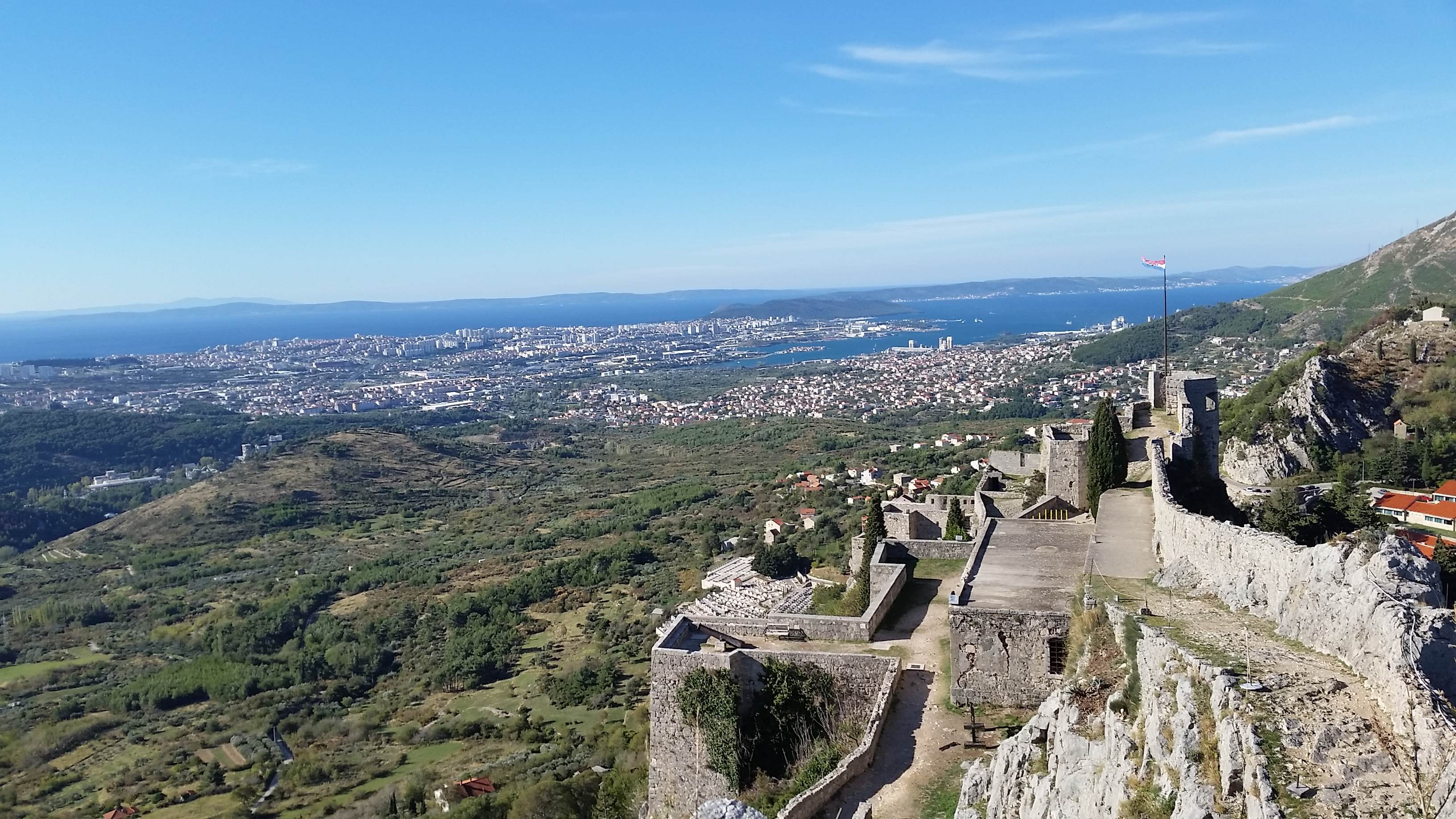 The view from Klis Fortress
The view from Klis Fortress
That's how long a fortress has stood here. Restructured and rebuilt several times over the millennia, within the walls of the impressive Klis Fortress lie much of the recent history of these lands – of the Illyrians and the Romans, the arrival of both Slavic people and of Christianity, the defence of Christian Europe from the Ottomans. So steeped in history are these walls, little wonder the fortress was chosen as a filming location for the popular Game Of Thrones series.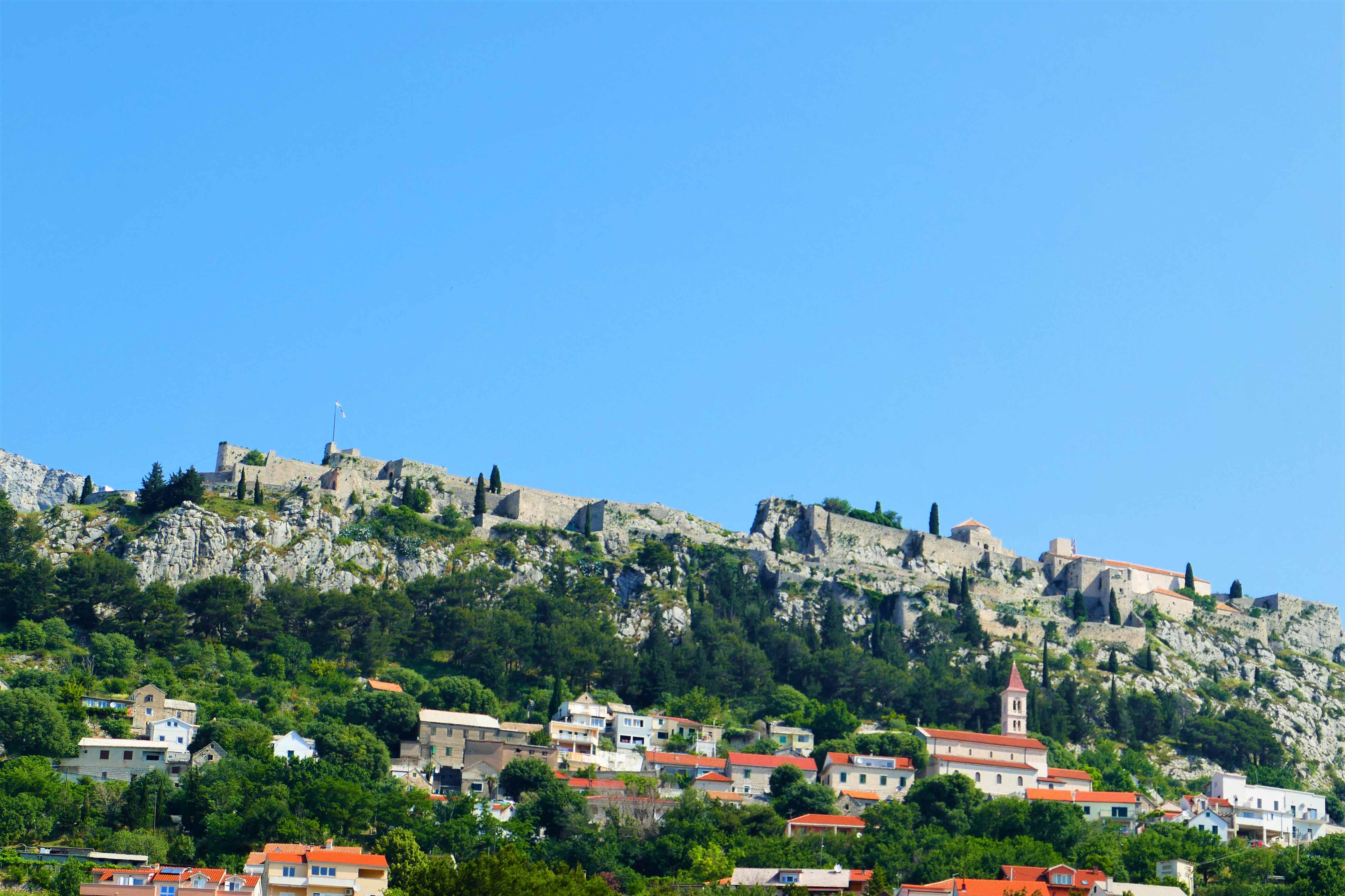 Klis Fortress
Klis Fortress
With its view so irresistibly inviting the eye, you could be forgiven for missing the plants of Klis Fortress. That's unfortunate. The fort straddles the top of the Dinaric Alps – one half existing within the sub-Mediterranean climate of the Dalmatian hinterland, the other on the distinctly warmer side of the Adriatic. This creates a unique environment for a wealth of flora. Not used as a fortress since the threat of Ottoman invasion subsided, these days the structure usually welcomes only tourists. The plants of Klis Fortress have reached into the grounds of the buildings, indeed into its very walls.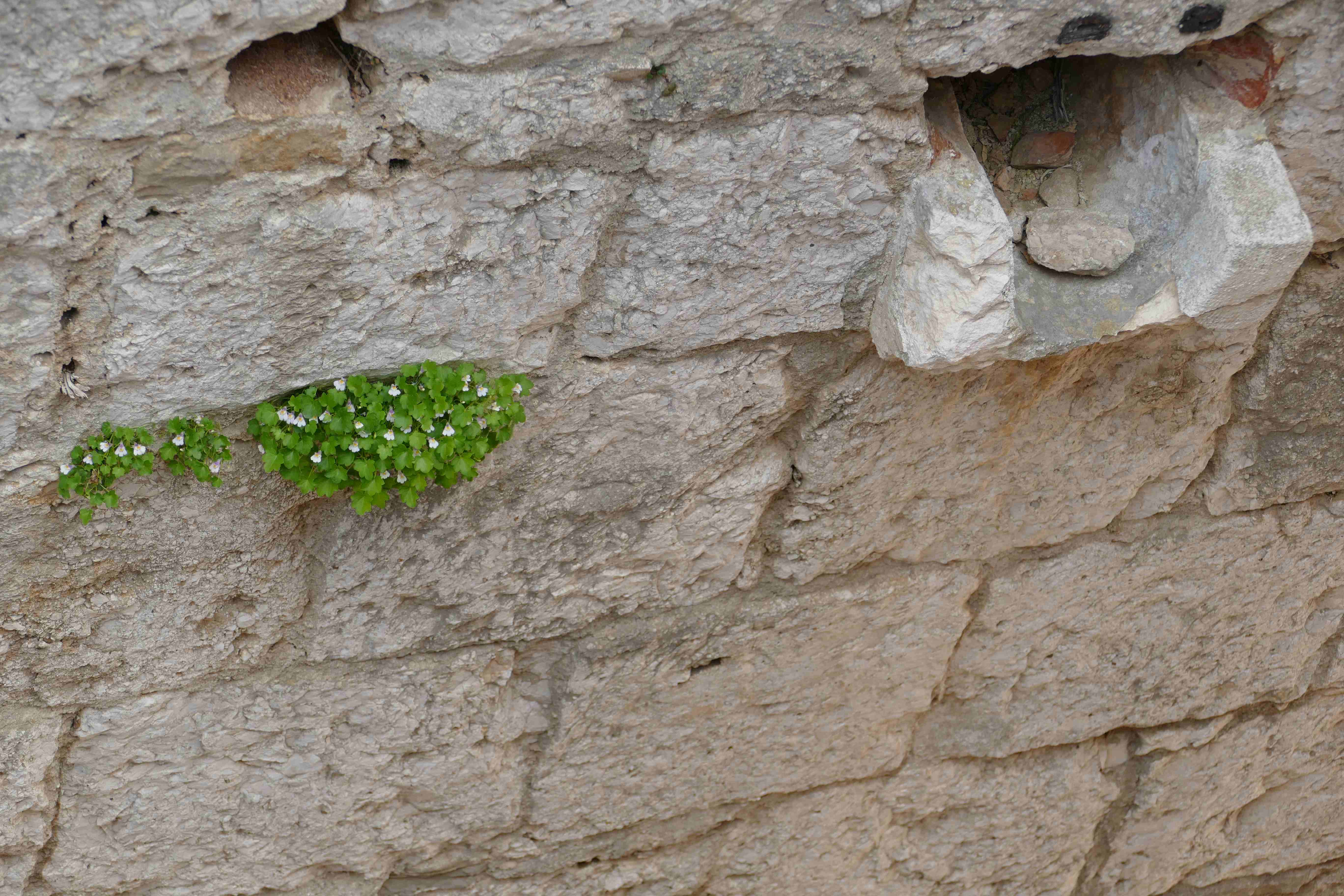 Cymbalaria muralis - Ivy Leaved Toadflax within the walls of Klis Fortress
Cymbalaria muralis - Ivy Leaved Toadflax within the walls of Klis Fortress
One person for who the plants of Klis Fortress did not go unnoticed is Ivan Limić. He lived in Klis all of his life, before leaving to get his degree, then a masters, at the Forestry department of the University of Zagreb. Today, he works for the Institute for Adriatic Crops and Karst Reclamation (IAC) on a PhD student's position. Having a specific interest in botany, he knows the plants of Klis Fortress better than most and after he met botanist Vedran Šegota of Herbarium Croaticum while in Zagreb, they decided they should work on a project together. After several years of work, that project - a book, 'Biljke Tvrdave Klis (Plants of Klis Fortress)' – has finally been released. Although helmed by co-authors Vedran and Ivan, it has actually been a project that involved a much greater group of contributors, not least the community of Klis and some of the best botanists in Croatia.
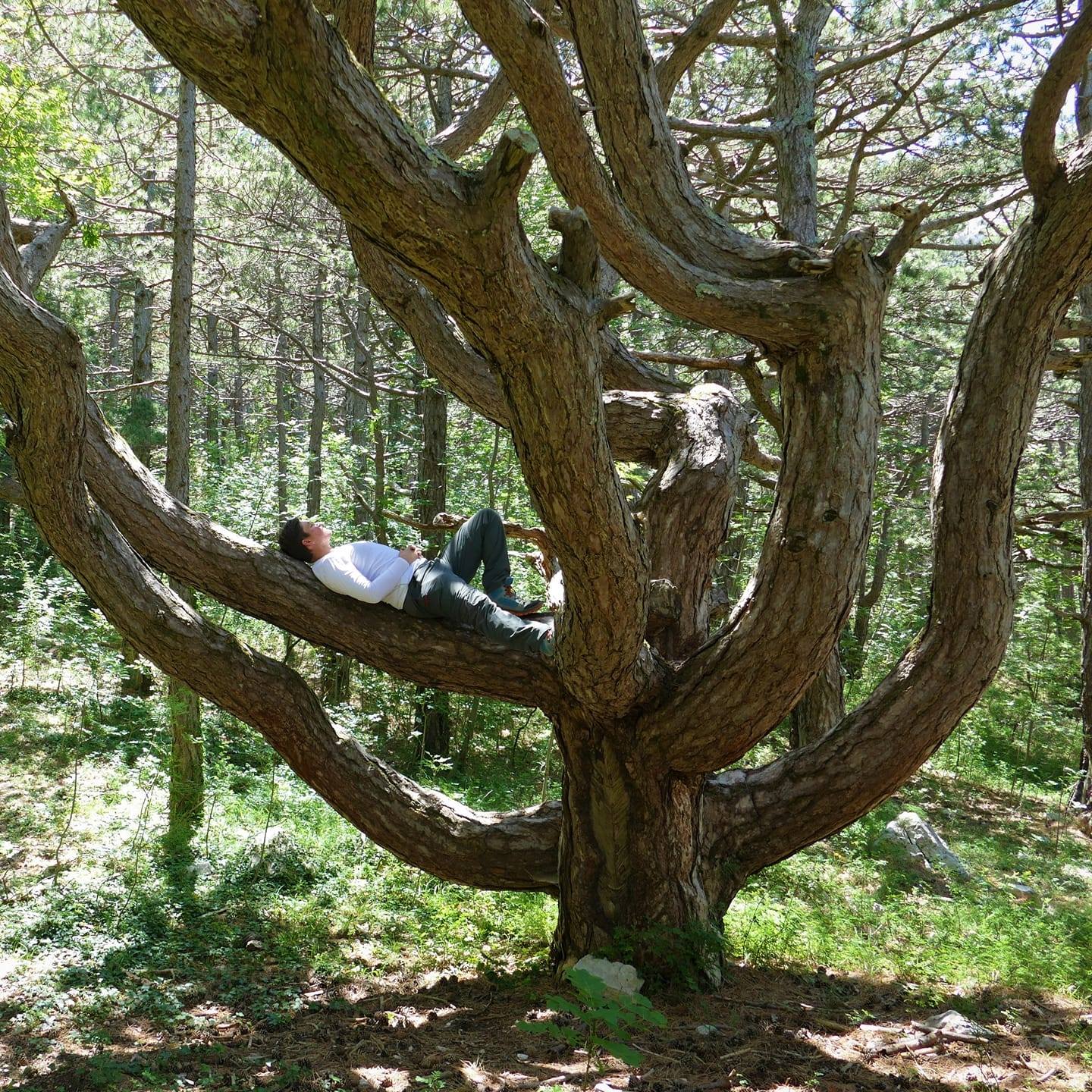
Ivan Limić, co-author of 'Plants of Klis Fortress', relaxing in a Black Pine
TCN talked with Ivan Limić to find out more about the book and about the plants of Klis Fortress
I first met Vedran when I started volunteering at Herbarium Croaticum Zagreb. I was in the city doing my degree. My main interests are forest silviculture and soil erosion, karst melioration, assessment of atmospheric deposition, study of flora, plant determination in Mediterranean region forest ecosystems and the effects of forest fires in those areas. We talked about doing a joint project because we shared similar interests. Vedran came to visit me in Klis and I wanted to show him around the fortress, but looking specifically at the flora. That's when we decided we should do a book about the plants of Klis Fortress.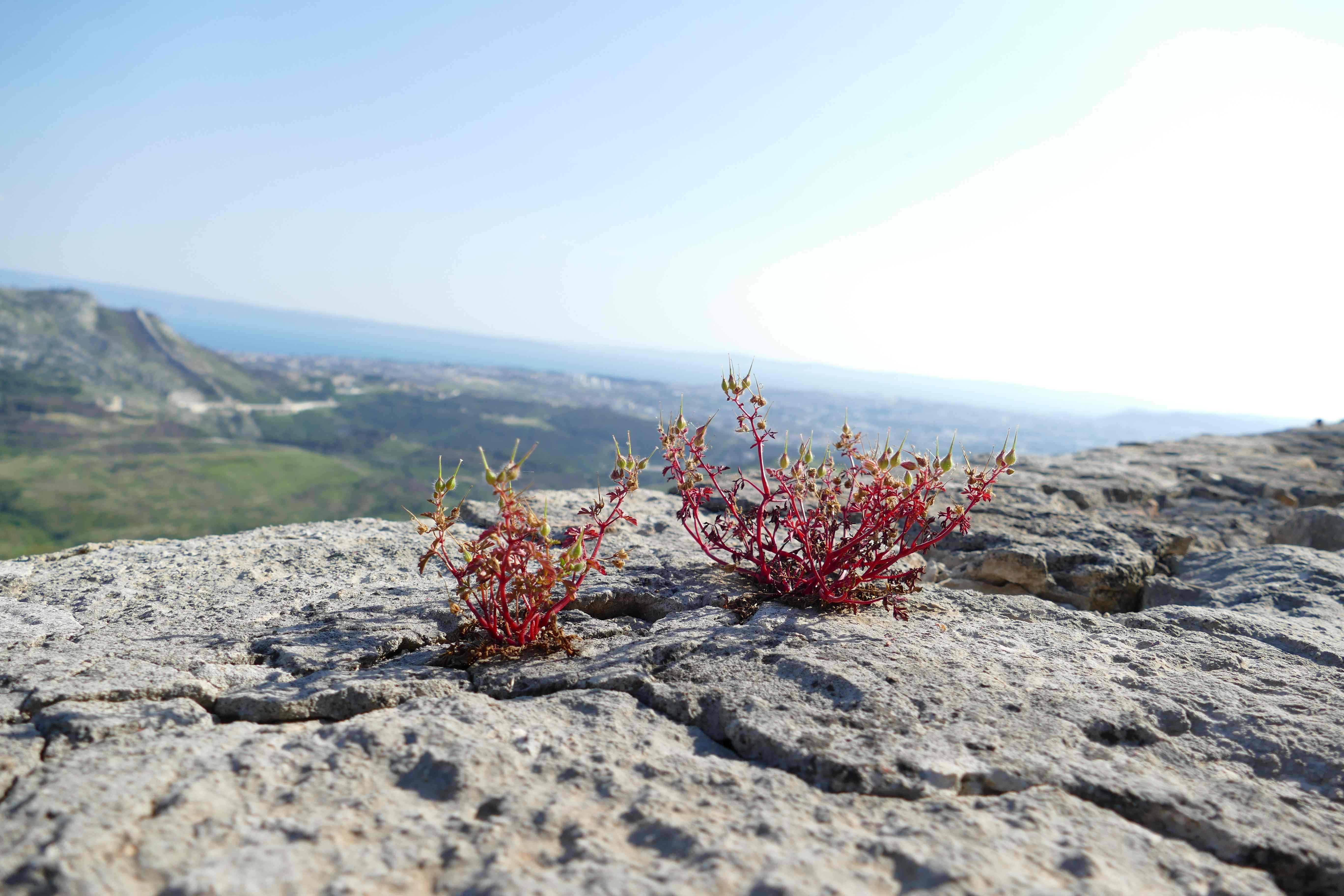 Geranium purpureum, the little-robin
Geranium purpureum, the little-robin
I walked around Klis Fortress all my life. When you live in a place, you not only acquire so much information about that place over the years, you also have an emotional connection to it. That's not something you can read in every book. Hopefully, with our book, we managed to get a sense of that emotional attachment across, so that you can really feel the place.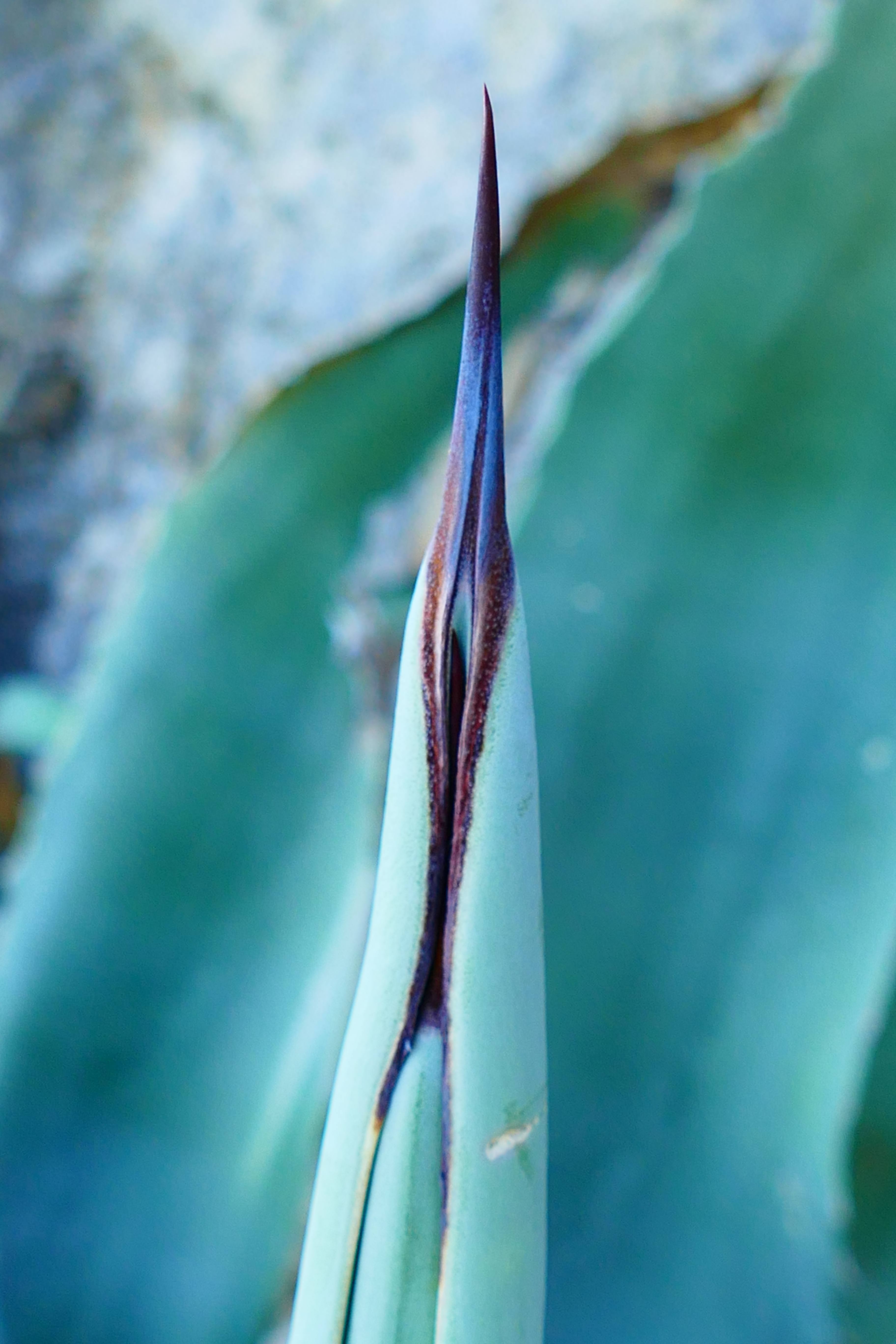 Agave americana
Agave americana
In a way, the special thing about the plants of Klis Fortress is that they are not so special at all – they are extremely characteristic. But, they are characteristic of two completely different climate regions.
On the south side of Klis Fortress, it is very warm and sunny – the Mediterranean climate. You can find species like Aleppo pine. On the northern side of Klis Fortress, it is colder – the sub-Mediterranean climate. Here, you can even get snow in winter and the most common species is Black pine. Two completely different climate regions in just a 50 metre stretch diagonally along the ground. That's what makes it extraordinary.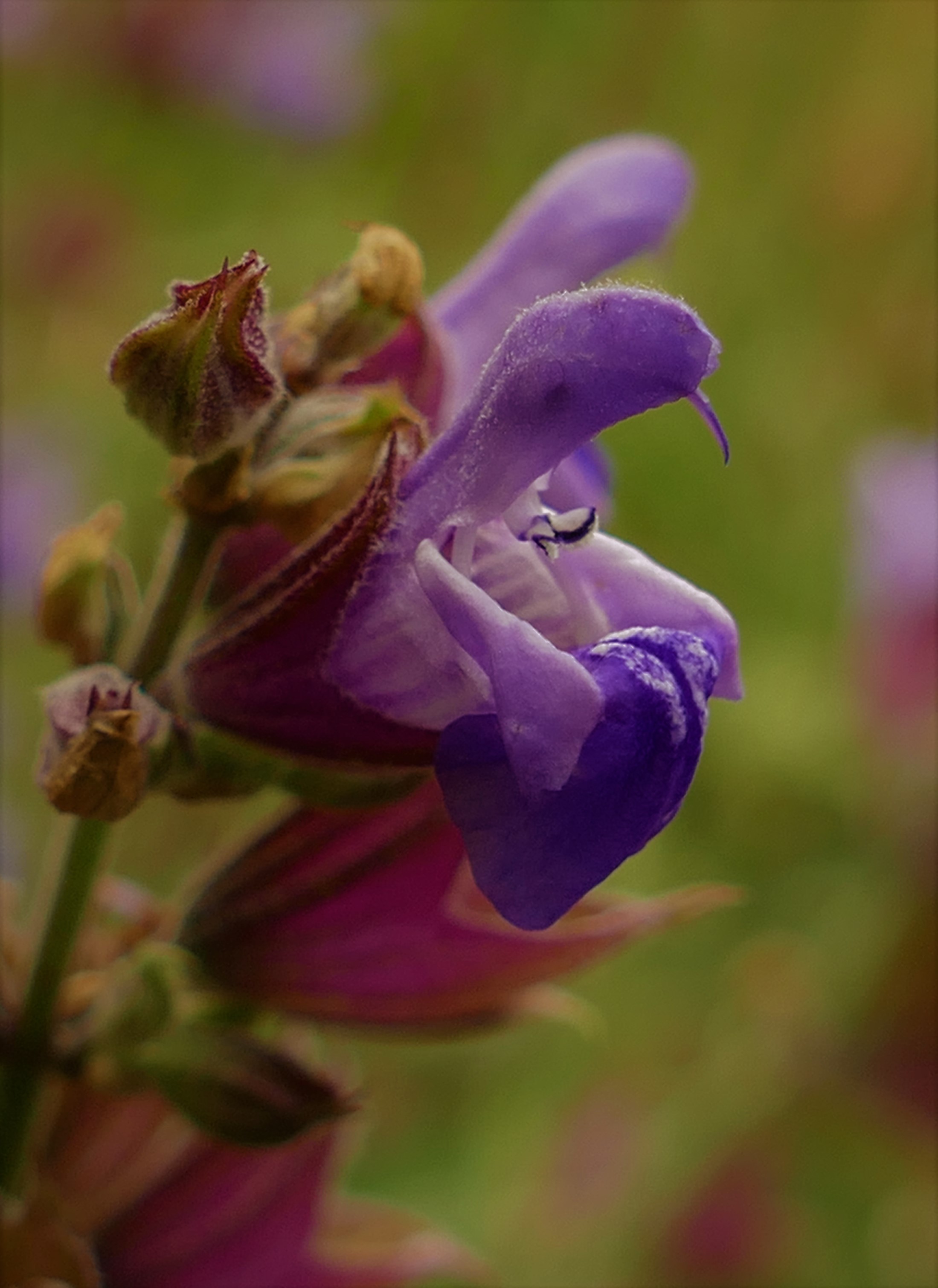 Salvia officinalis (sage)
Salvia officinalis (sage)
The plants of Klis Fortress include more than 300 species. We have around 100 of them listed in the book. Of those, 16 are species endemic to this area. Some of those are extremely rare - you can find them in very few places in Croatia - such as Fibigia triquetra. That plant is actually one of the reasons why this book exists. When I was a child, people used to tell me that some of the plants of Klis Fortress were very unusual and very rare. I used to walk around the fortress, looking at all the plants, trying to guess which ones were the unusual and rare species.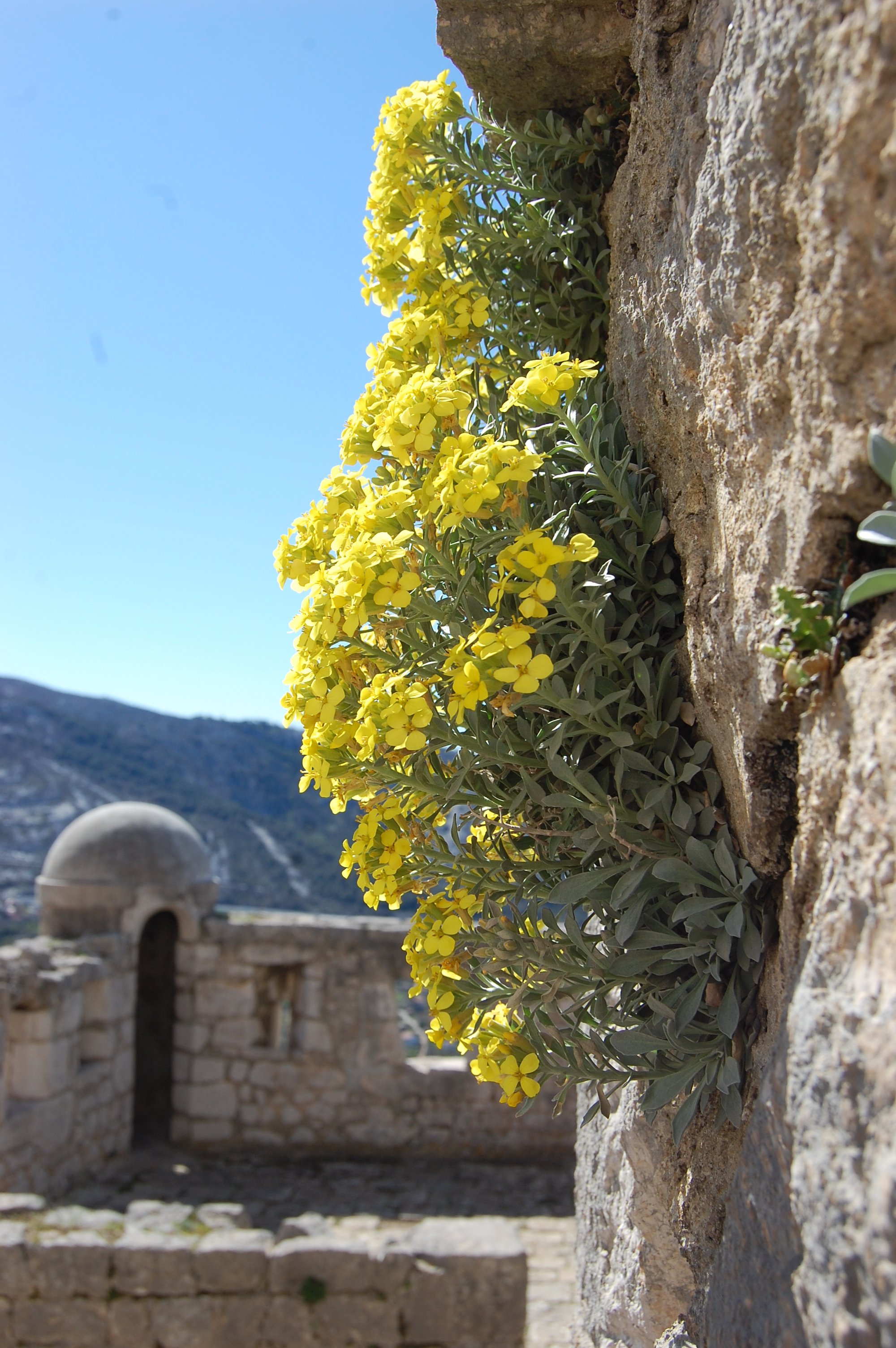 Fibigia triquetra
Fibigia triquetra
The man who first identified this as a unique, endemic species actually discovered his first specimen inside Klis Fortress. All of the studies and writings he made about the plant were done here. That plant is now the symbol of Klis Fortress.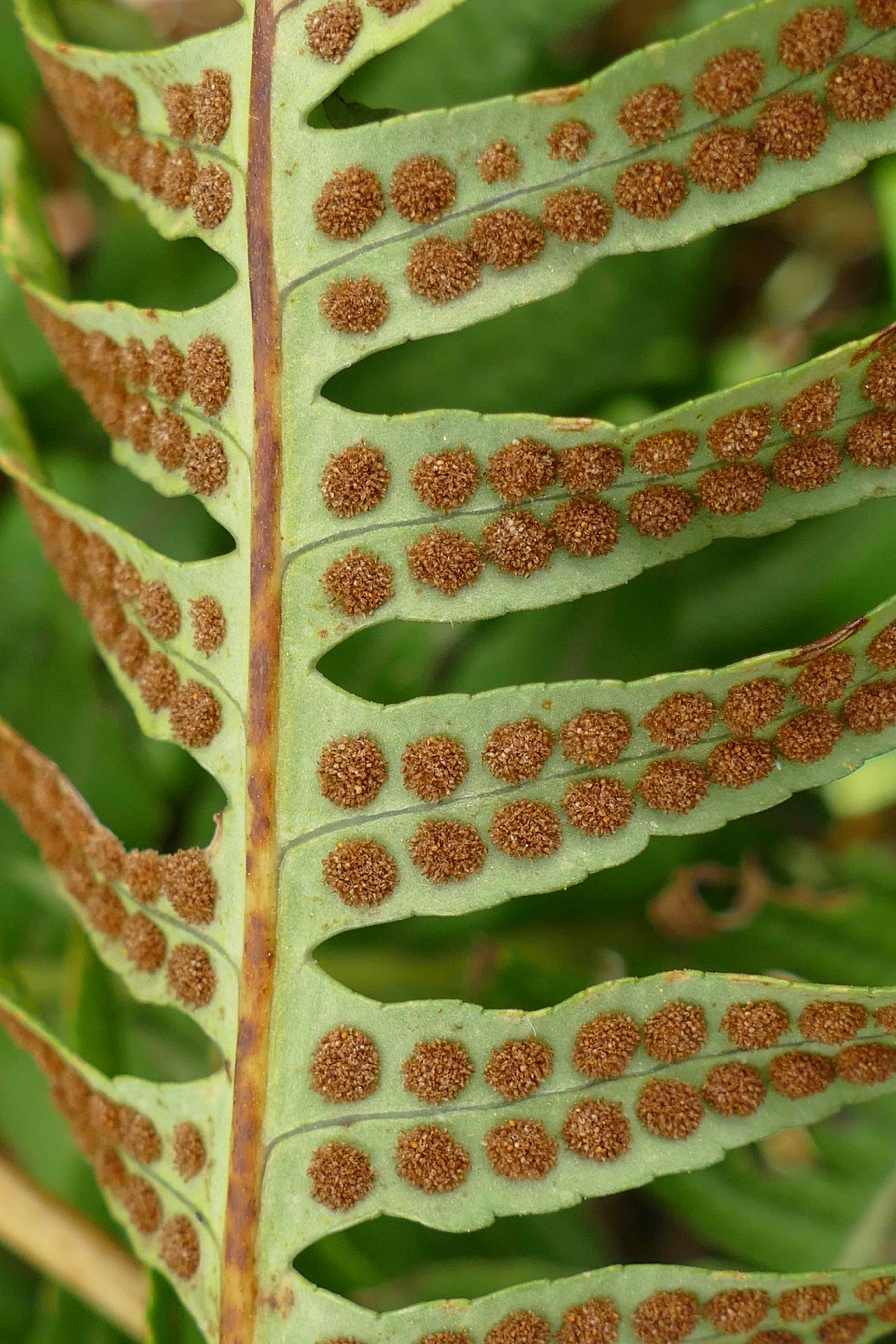 Polypodium cambricum
Polypodium cambricum
You can find our book in Klis library. Anyone can borrow it. It's also available at the entrance to Klis Fortress, where you buy the tickets. We wanted to give the opportunity to anyone who comes here to learn about the plants of this region – that's why we made such an effort to have the book in five languages. It was designed as a guide to the plant species of the whole Mediterranean mountain region in Croatia, so it's not just for the plants of Klis Fortress or the people who come to Klis Fortress itself.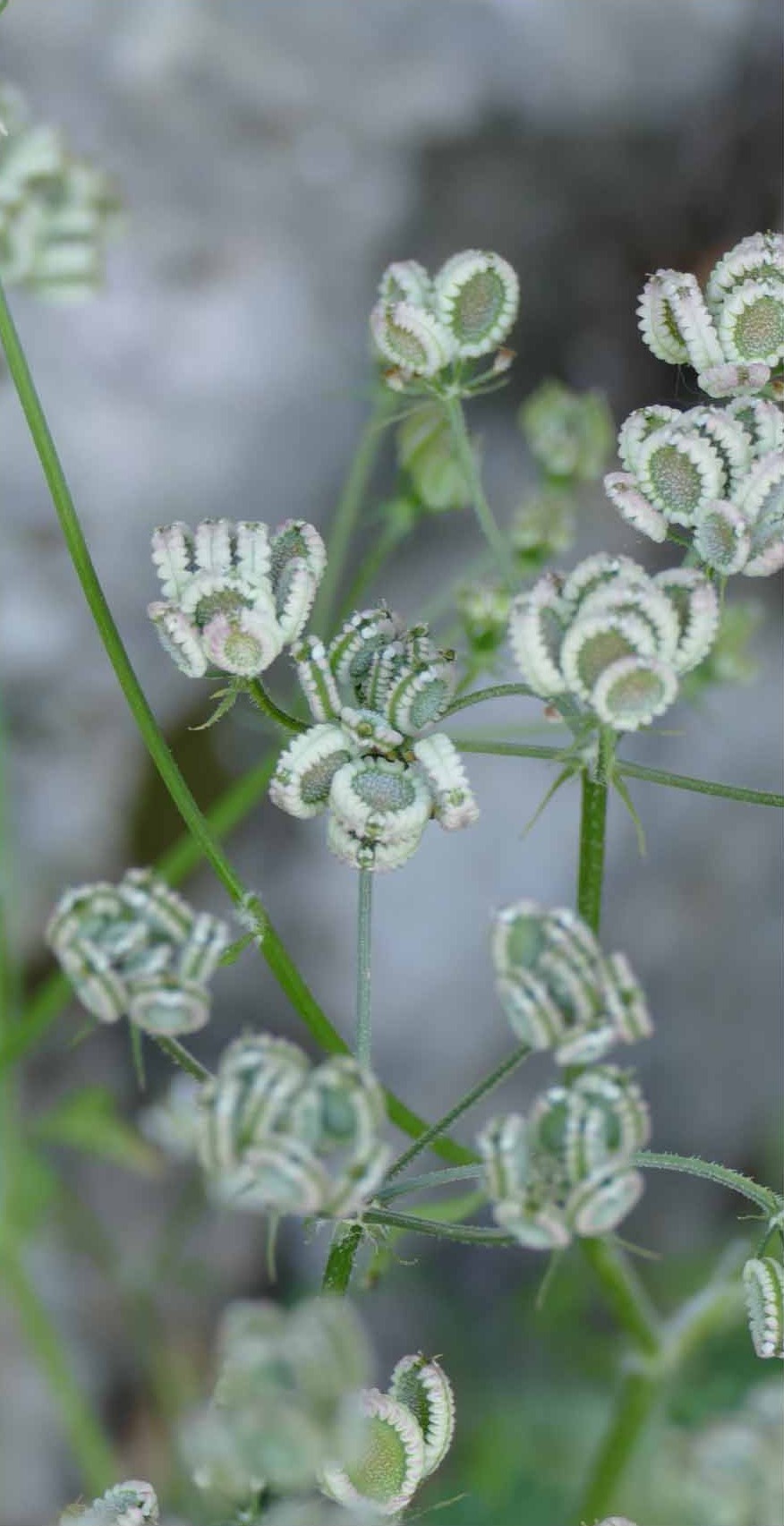 Tordylium
Tordylium
Most of the photography in the book was done by ourselves. It was important to take the photographs across four different seasons. That's one of the reasons it took almost two years to write this book.
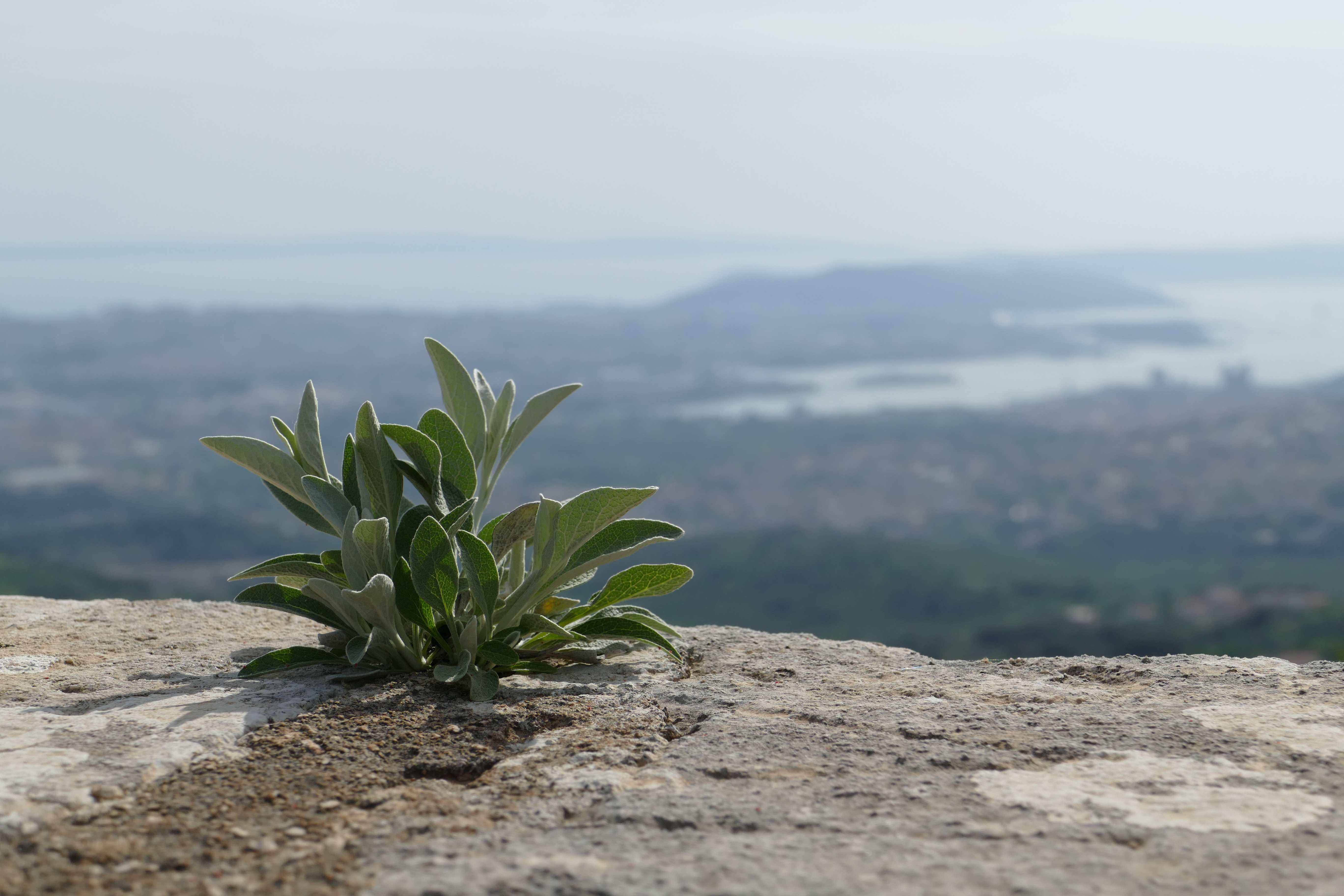 Inula Verbascifolia
Inula Verbascifolia
As we were making progress on the book, people in Klis began to find out what we were doing. It ended up becoming a project of the wider community. The mayor of Klis supported the project financially so that we were able to publish the book professionally and the library of Klis edited and published the book.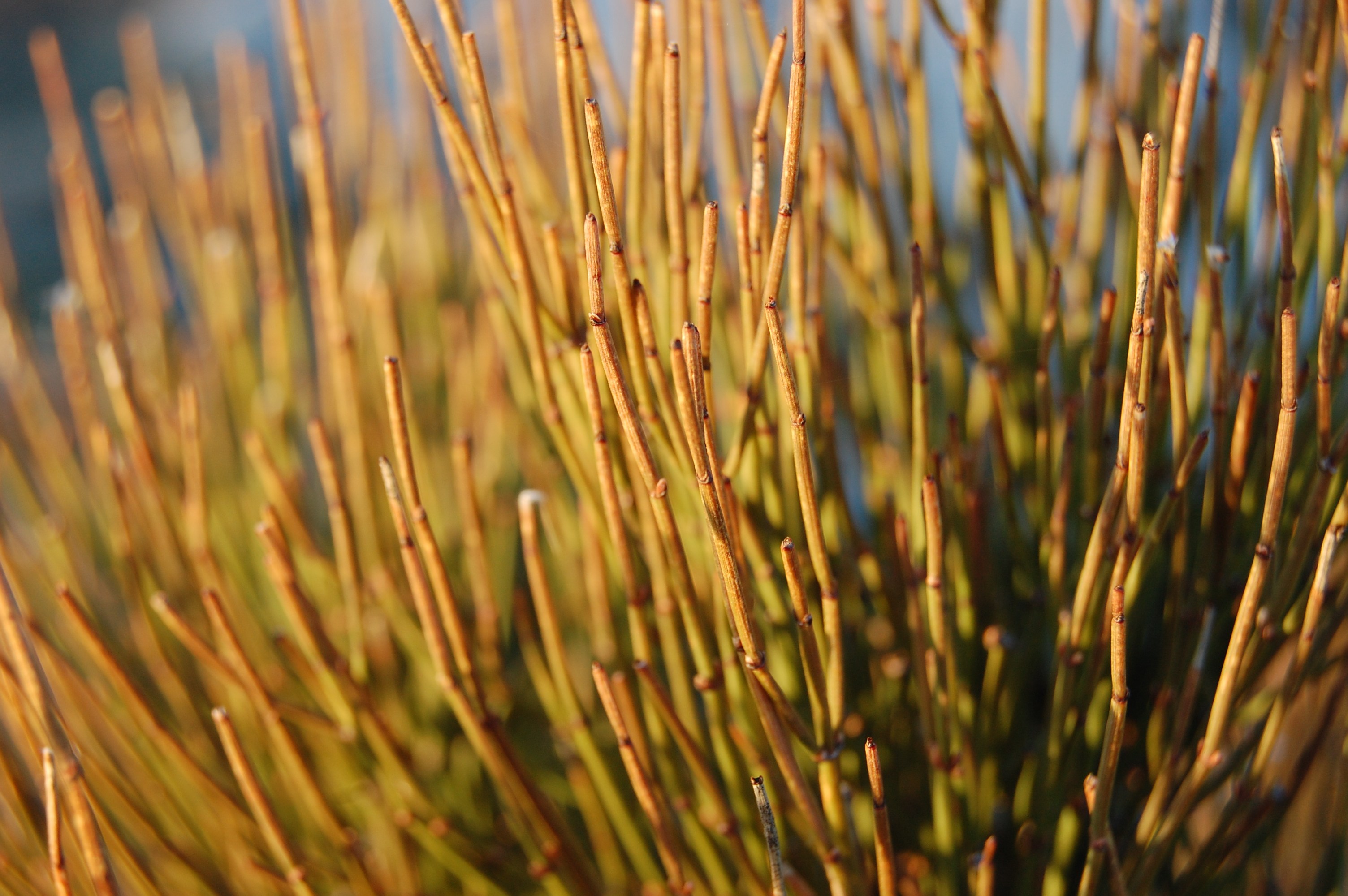 Ephedra major
Ephedra major
Others contributed to the design of the book and the translations, of course. Almost all of them donated their time and work to the project for free. It is quite difficult to translate some of this specific text correctly and we wanted to get it absolutely right.  Agave americana
Agave americana
In the end, we ended up getting contributions from Italy and France, we had one colleague from the French embassy who helped and some of the best botanists we have in Croatia contributed to the book to make sure everything was absolutely correct. For that reason, the book was approved and recommended by the Botanical Society of Croatia and can be found in the Botanical library.
All images © Ivan Limić / The Plants of Klis Fortress
VIDEO: Split Riva Flooded and More as Hurricane-Like Jugo Winds Rip Across Dalmatia
December 29, 2020 - A look at the Split Riva flooded as hurricane-like jugo winds ripped across Dalmatia on Monday night.
Jutarnji List reports that gusts of the stormy south wind jugo, which raged across the Adriatic on Monday, caused waves several meters high, due to which maritime traffic was partially suspended.
The famous Split Riva could not even be spared, as scenes of it flooded were shared all over local media. The waves even reached the walls of Diocletian's Palace. Fortunately, the winds weakened overnight.
Around 9 pm, the peak of wind strength in Dalmatia was recorded. The strongest gusts were measured at the Star Village Mosor, located in the city of Split, where jugo had gusts up to 140 km / h.
On Monday night, these hurricane-like winds created waves on the open sea up to six meters high in the central Dalmatia area. They were between two and four meters in the coastal area, flooding the waterfronts in even more coastal towns. The meteorological station on Marjan recorded hurricane gusts in the Split area for several hours, the State Hydrometeorological Institute in Split said.
Waves also flooded the waterfront in Kaštel Gomilica, where water entered a house in its eastern part. Firefighters intervened and pumped out water, Kaštel Gomilica reported from the DVD.
During the day, all catamaran and most ferry lines were interrupted, and due to wind gusts and several-meter-high waves, the ferry that was supposed to sail from Supetar to Split and return to Supetar was postponed last night, the head of Jadrolinija's agency in Split Jelena Ivulić confirmed.
All catamaran lines that connect Split with the central Dalmatian islands were interrupted on Monday due to unfavorable weather conditions at sea.
Ivulić stated that the ferry lines Split-Vela Luka-Lastovo, Trogir-Drvenik Mali-Drvenik Veli, Sumartin-Makarska, and Sucuraj-Drvenik were also interrupted due to bad weather.
On Tuesday, the Adriatic is expected to be partly cloudy with occasional rain, locally abundant. The interior is partly sunny and mostly dry. There may be sleet and snow in the highest mountains.
A moderate to strong southwest and south wind will blow, with occasional gusts of wind on the Adriatic, and will weaken towards the end of the day. The lowest air temperature on the coast and islands will be from 7 to 11, and the highest daily from 10 to 15 degrees Celsius.
Unstable and changeable weather is expected in the coming days and occasional rain, which may be more abundant in some places on Wednesday. The wind will be mostly weak to moderate southwest and northwest, and on Friday, the south wind will strengthen again.
To read more about news in Croatia, follow TCN's dedicated page.
Westgate Group Split: Dalmatia Tower Ready to House First Marriott Hotel in Croatia by End of 2021
December 27, 2020 - Construction on the Westgate Group's Dalmatia Tower in Split, which will house the first Marriott Hotel in Croatia, should be complete by the end of 2021.
Slobodna Dalmacija writes that this year, in the list of the top 50 tallest buildings in Europe, Split's Dalmatia Tower is in 22nd place, standing tall at 135 meters, just two less than Romania's Sky Tower, which ranked higher.
The project, which created a new architectural value in Croatia and enriched Split's urban value, has reached its full height this year. Residents of nearby buildings and those who often drive on Domovinskog rata Street, during the first six months, followed the tireless work of crane operators on the country's highest construction crane and counted the number of floors from week to week until the final 27th floor was erected.
As is already known, Dalmatia Tower is part of the Westgate project consisting of two towers; the first, which has been the seat of the Management Board of Splitska banka since 2016, today OTP banka. Their offices are located on 12 floors while four underground floors are reserved for employee parking spaces. The modular approach to design has enabled users to adapt the office to their own needs and the criteria of a "green building," a pleasant and energy and cost-effective work environment.
Today, four years after the move to "Tower A," the conclusion is that the recognition of the 2017 project was justified when the first prize for the best high-rise business project in Europe arrived in Split - and it won among a few thousand applications from 115 countries.
On that occasion, architect Otto Barić considered it necessary to point out that the recognition itself does not refer exclusively to the architecture of one of the most challenging projects in his rich career but is also related to development skills.
Therefore, investors point out; there is no doubt that apart from the height of Dalmatia Tower, it will also impress with its contents and functionality, which is key to feeling comfortable in any space.
This will soon be confirmed by guests of the first Marriott hotel in Croatia because not only do the hotel rooms offer a fantastic view of Diocletian's city and the sea, but there is also a wellness area, indoor pool, restaurant with terrace, conference rooms and other facilities.
Courtyard by Marriott - a brand of the world-renowned group Marriott International will be located on the upper floors, from 16 to 27, and with four-stars, will fit perfectly into the tourist offer of Split in the segment that the city lacks the most.
Just under a month ago, the prestigious British edition of The Times & The Sunday Times declared Croatia among the top three international destinations in the "Best Country award 2020" category, positioned just behind Italy and New Zealand. It's no surprise that the Brits value the diversity of natural beauty and a rich tourist offer the most.
Official Eurostat data on tourism trends for the past season confirmed Croatia's leading position in the Mediterranean, which confirms the stable position that Croatian tourism enjoys internationally and an additional encouragement for the Marriott Group's business in Split.
The hotel's location in a busy, dynamic part of the city, only fifteen minutes by foot to Diocletian's Palace and twenty minutes by car to Split airport, makes it an ideal choice for accommodation for business reasons or a relaxing holiday.
Modern but warm interior design will certainly be an additional lure, and as a "green building," there will be rational water consumption and reduced CO2 emissions, which makes living conditions in interiors more comfortable. With the international energy certificate LEED, all users are guaranteed a healthy and stimulating work environment and a pleasant, relaxing holiday, somewhere between the sea and the sky.
After Dalmatia Tower's exterior construction was completed and the glass facade was almost completely set, we have to wonder: "When will it be finished?".
"If everything goes according to plan, at the end of 2021," said the Westgate Group.
"Although the reinforced concrete construction of the tower is the most visible part of the work for the public, the most complex part of the project related to the installations and the interior is in front of us. Installation and construction-craft works are in progress, and the project is financed by the Croatian Bank for Reconstruction and Development," they added, and finally concluded:
"Unpredictable is the real name by which we can call 2020, which we are slowly leaving behind, so we are cautiously predicting what the next one might bring. However, as the works on Dalmatia Tower were not stopped during the lockdown but continued with respect to epidemiological measures, we believe that the remaining part of the work on the Split tower will go according to plan. That New Year's wish could come true for us!"
To read more about business in Croatia, follow TCN's dedicated page.
Fourth Split Gastroadvent at Kadena Puts Vaccinations, Hvar, and Mediterranean Diet in Focus
December 20, 2020 - The fourth Split Gastroadvent was held at seaside restaurant Kadena, with the importance of vaccines, the Mediterranean diet, and the island of Hvar in focus.
TV journalists were honored as the candle of love was lit on the fourth Gastroadvent Sunday, with representatives of tourist boards and Split-Dalmatia County.
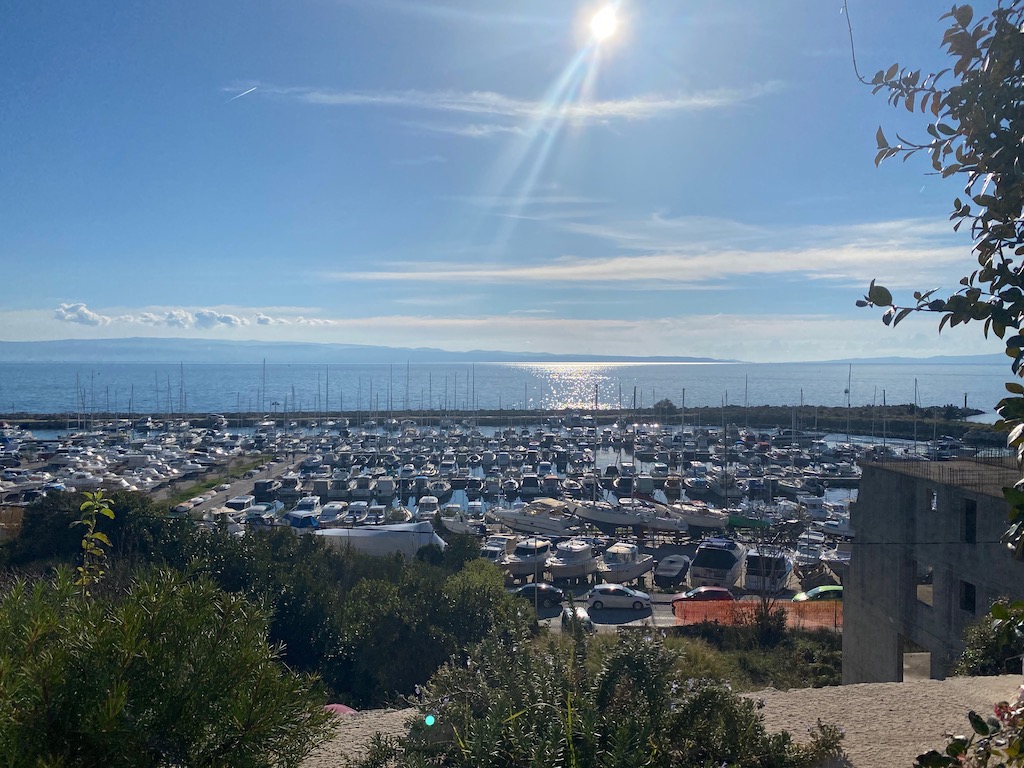
Olja Martinic opened the fourth Gastroadvent Sunday to emphasize the importance of vaccines.
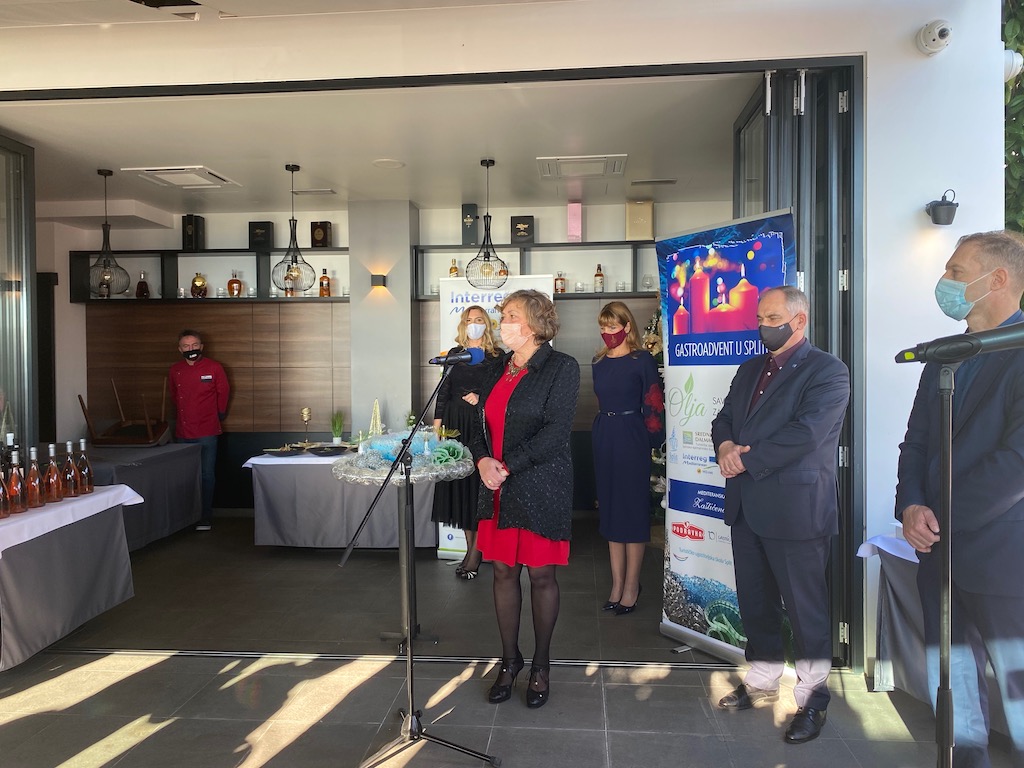
"A vaccine has no alternative and is most important in fighting viral infections. A quality lifestyle is of great importance. The human body needs macro and micronutrients daily, so it is crucial to take them in, ensuring daily activities and a good immune response to many challenges. A moderate Mediterranean diet ensures perfect synergy and optimal intake of nutrients that we store in our body. We have plenty of fruits, vegetables, and perfect traditional recipes at our disposal," said Martinic.
Fish products are a good source of zinc (Zn), micronutrients of great importance, which has a beneficial effect on the metabolism of macronutrients and carbohydrates, and protein synthesis. The role of Zn in the protection of cells from oxidative stress and the normal function of the immune system is significant. It is essential to consume enough fish, oysters, oysters, crabs, tuna, shellfish.
As 2020 marks the jubilee 10th anniversary of recognizing the Mediterranean diet, this year's theme pays great attention to the sea. The Mediterranean Sea boasts about 2.5 million km² and connects all countries of the original Mediterranean diet.
Following this theme, this year's Gastroadvent wreath is also dedicated to the sea and its preservation. The seafoam wreath symbolically and literally simulates the sea world and is created from discarded trash and plastic. The Mediterranean diet theme inspired prominent sculptor Nives Čičin Šain to send a message artistically: “Let's preserve our sea and the life in it that feeds many with its beauty."
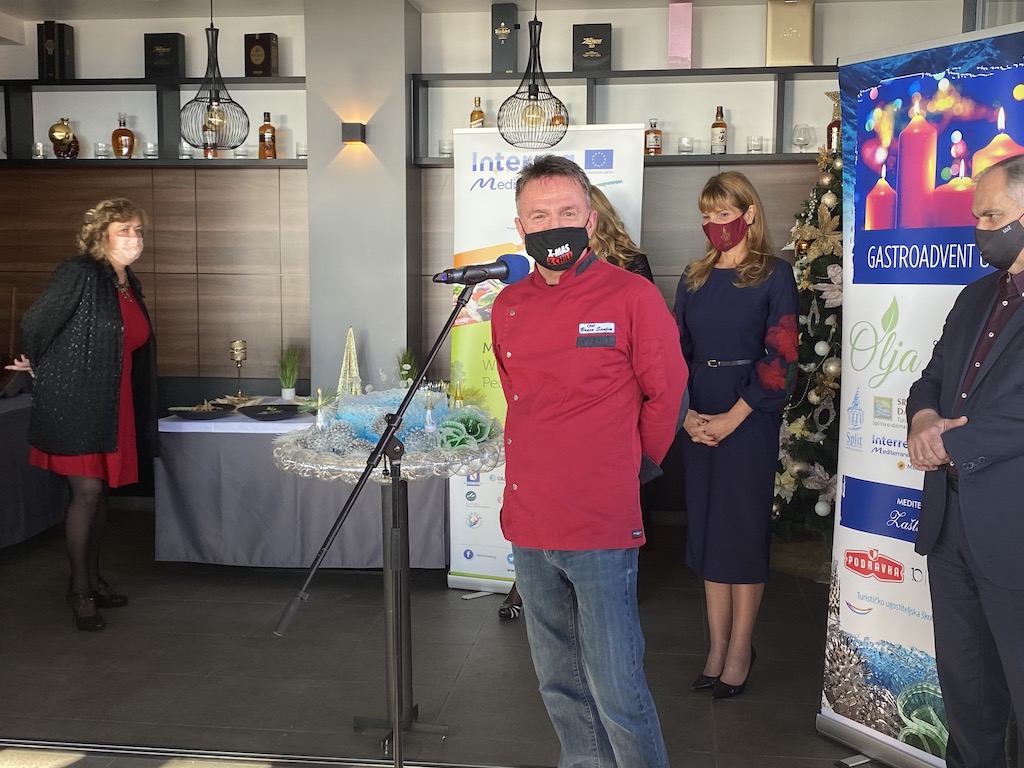
The Kadena restaurant chef, the highly respected Braco Sanjin, prepared a stunning selection of plates from various types of seasonal small fish provided by the Gastro Ribarnica Brac fish market.
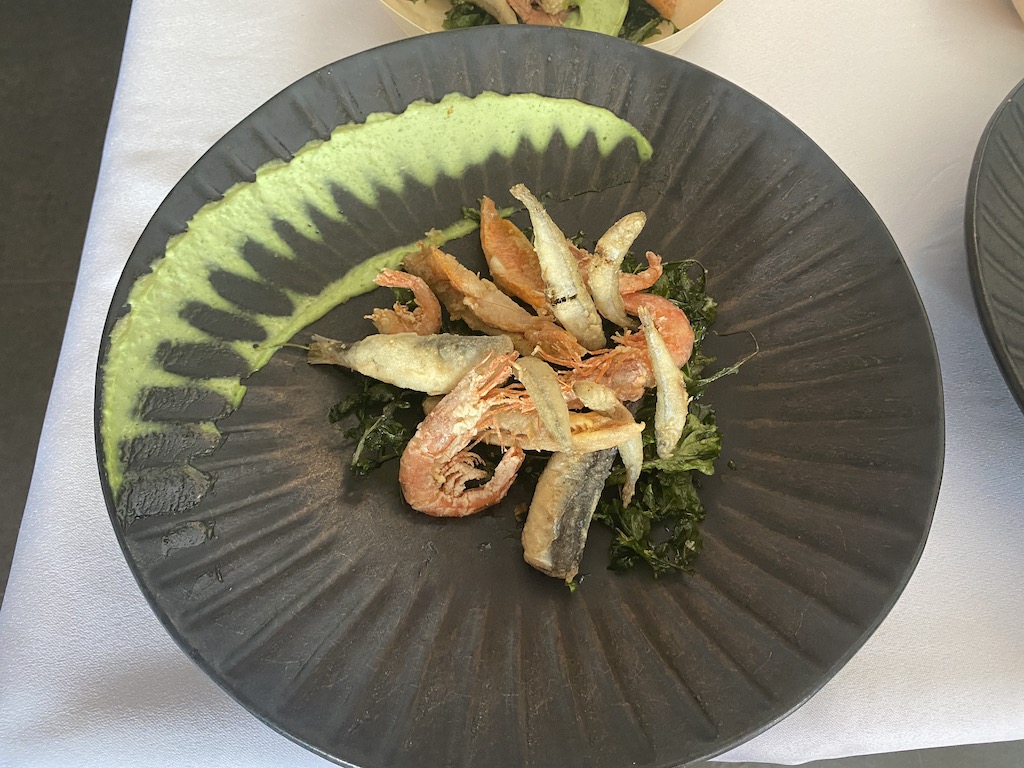
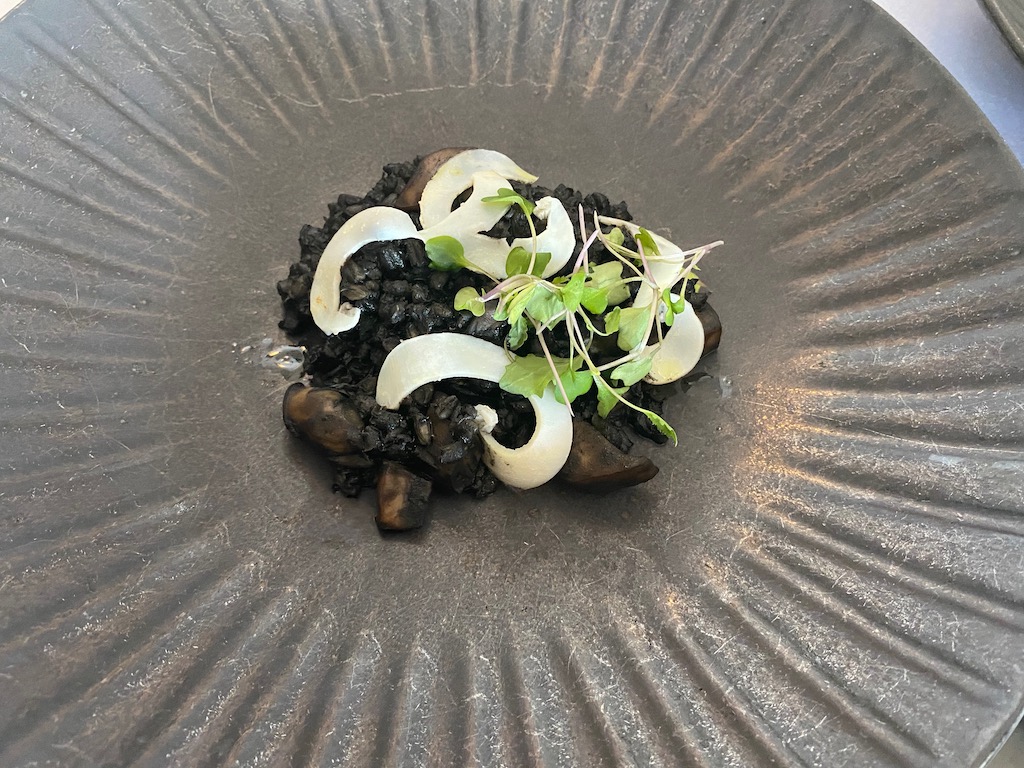
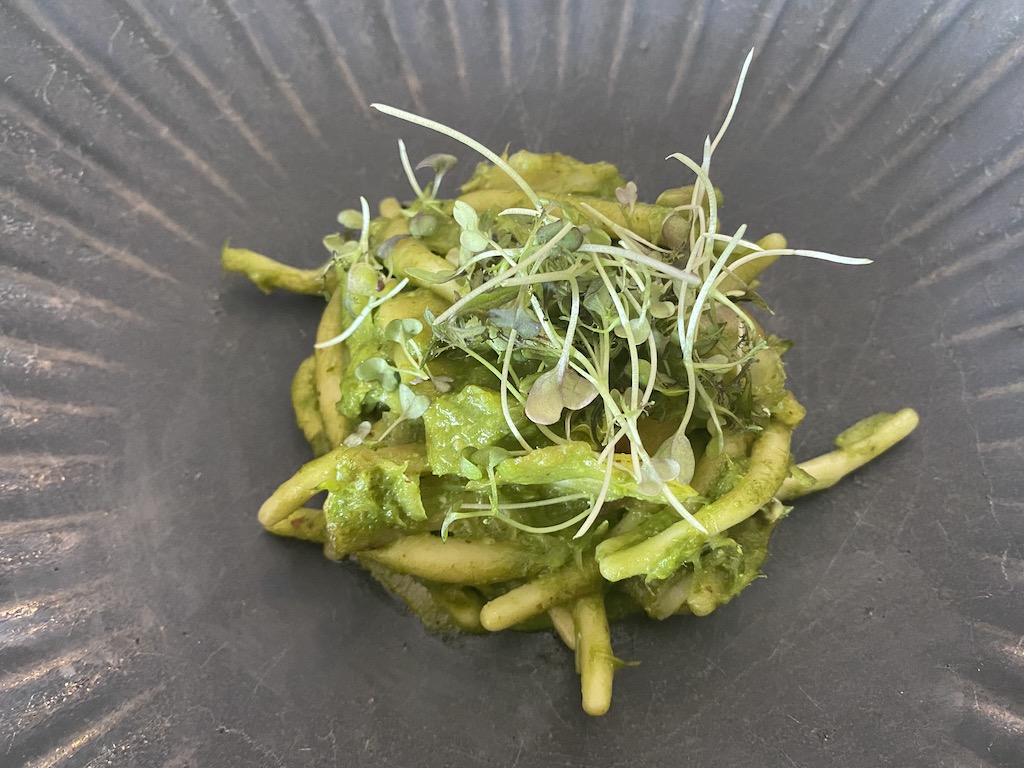
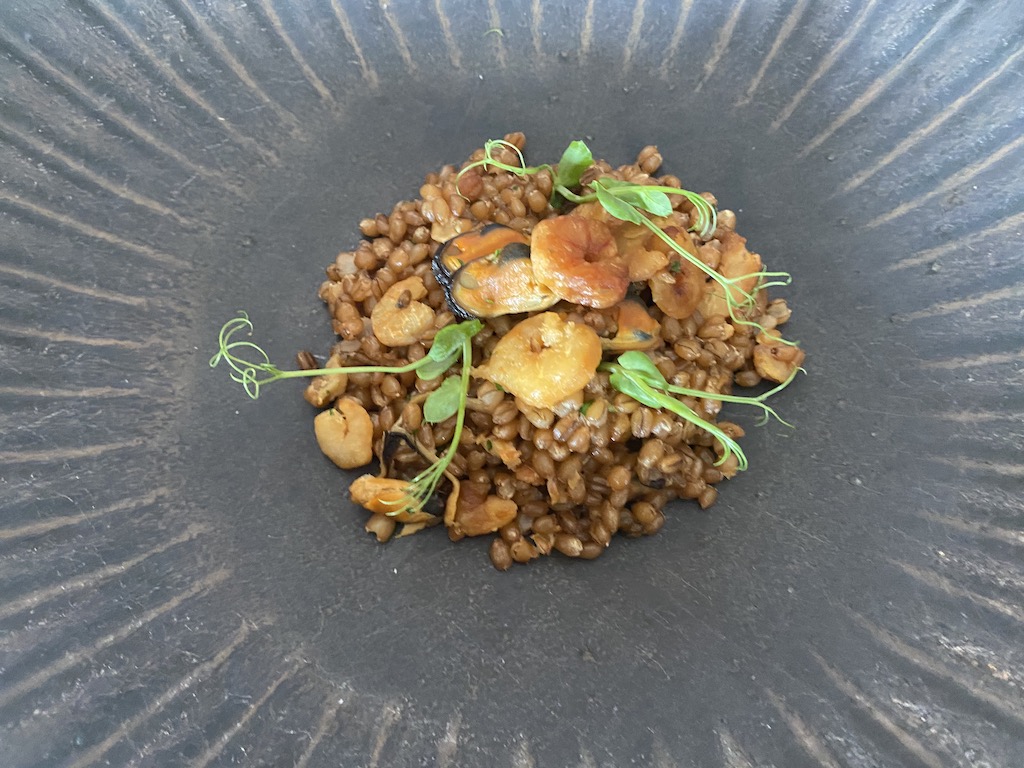
Mario Jeličić Purko presented Hvar Hills winery, which is owned by his family. Hvar Hills manages a 30-hectare vineyard on the southern slopes of the island of Hvar, which is also one of the largest island vineyards in the Mediterranean. They presented four wines: Bogdanuša, an indigenous white variety of the island of Hvar, Pošip as the most important Dalmatian white variety, delicate Provencal Rosé Pius, which is a blend of several varieties, and Plavac mali Maior Rizerva from 2016, which recently won bronze at the Decanter competition in London.
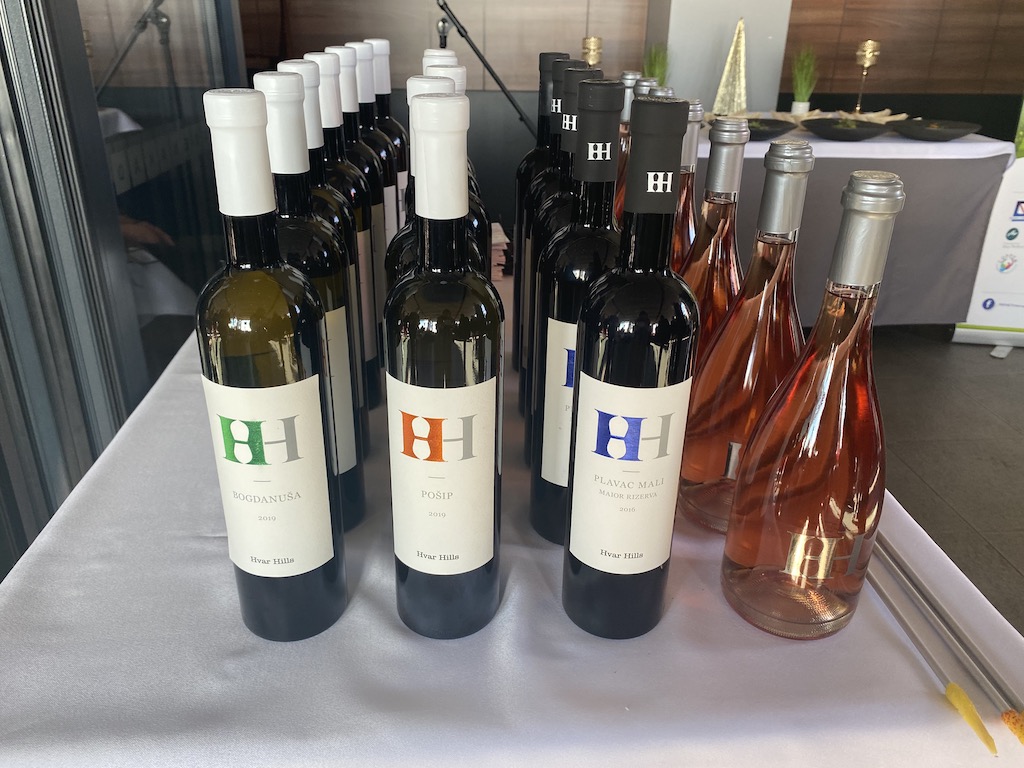
The fish of the Adriatic Sea was presented by partner Gastro Ribarnica Brač, which makes fish more accessible through regular campaigns, and with its professionalism, guarantee safety, availability, and originality. The Amare brand, which focuses on "love from the sea," combines hand-cleaned meat of Adriatic shrimp, which is synonymous with quality and an indispensable food for restaurants and households, as well as marinated shrimp, marinated anchovies, and salted anchovies. Their novelty is the first burgers made of Adriatic shrimp and scampi, which have achieved notable success on the market. On the wings of this success, the idea for a burger made of Adriatic fish was created, more precisely, of four types of white fish and two types of bluefish. Along with domestic fish during the holiday season, at Centaurus d.o.o., you can get an excellent "Premium" cod (Bakalar).
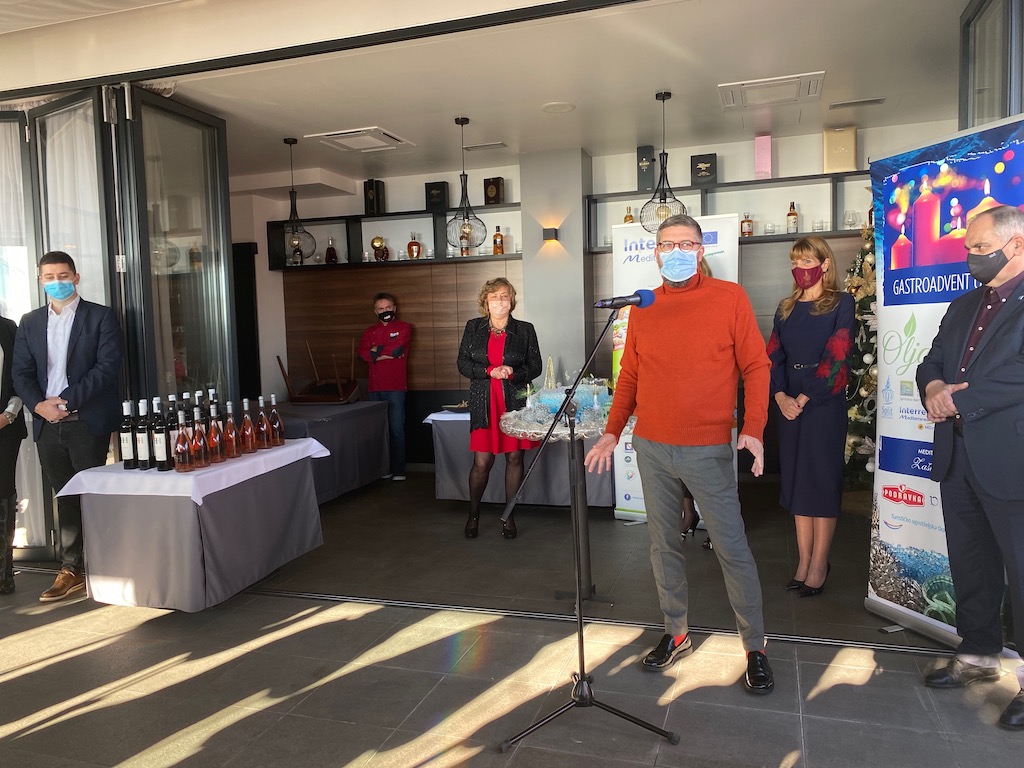
Ecology and competence in gastronomy and tourism are the future projects of the Split School of Tourism and Hospitality. Under the leadership of director Ivo Bilić, the School of Tourism and Hospitality Management Split has been appointed the Regional Center of Competence in Tourism in the summer of 2018.
The regional center of competence in the tourism and hospitality sector is the name of a long-term project of the Tourist Catering School Split and partners.
The idea of creating a Regional Competence Center (hereinafter: RCC) arose as a need to improve human resources in tourism, and this school has been in development for about 10 years. Seven years ago, a model of the center was presented at the Ministry of Tourism, originally an idea for developing quality schools in tourism. The initial model was for Split-Dalmatia County with about 15 schools (mostly in Croatia) that educate for at least one of the occupations in the tourism and hospitality sector (there are about 100 schools in Croatia). The main goal was (and remains) that students have better exit competencies upon completing education and uniform in all schools. The important role of the RCC is to connect with the local community, and it will be manifested through two goals:
1) Projects with kindergartens and primary schools in creating habits among young people and encouraging reflection on tourism, and on the other hand as promoting our professions,
2) Participation in local (regional) events, creating habits among the population about the benefits and importance of caring for the guest-tourist.
This year's Gastroadvent also features Mediterranean Food - MD.net, a project funded by the European program Interreg Mediterranean, worth 3.7 million EUR, and implemented by the Public Institution RERA S.D. for the coordination and development of Split-Dalmatia County. The project involves 14 project partners from 9 countries in the Mediterranean, aiming to popularize the Mediterranean diet. The main goal of the project is to strengthen research in this area following the UNESCO Convention on Mediterranean Nutrition, to raise the quality of food and life in 9 project partner countries, as well as promote the Mediterranean diet, which is recognized as the gold standard of proper nutrition, as well as its far-reaching beneficial effects on health.
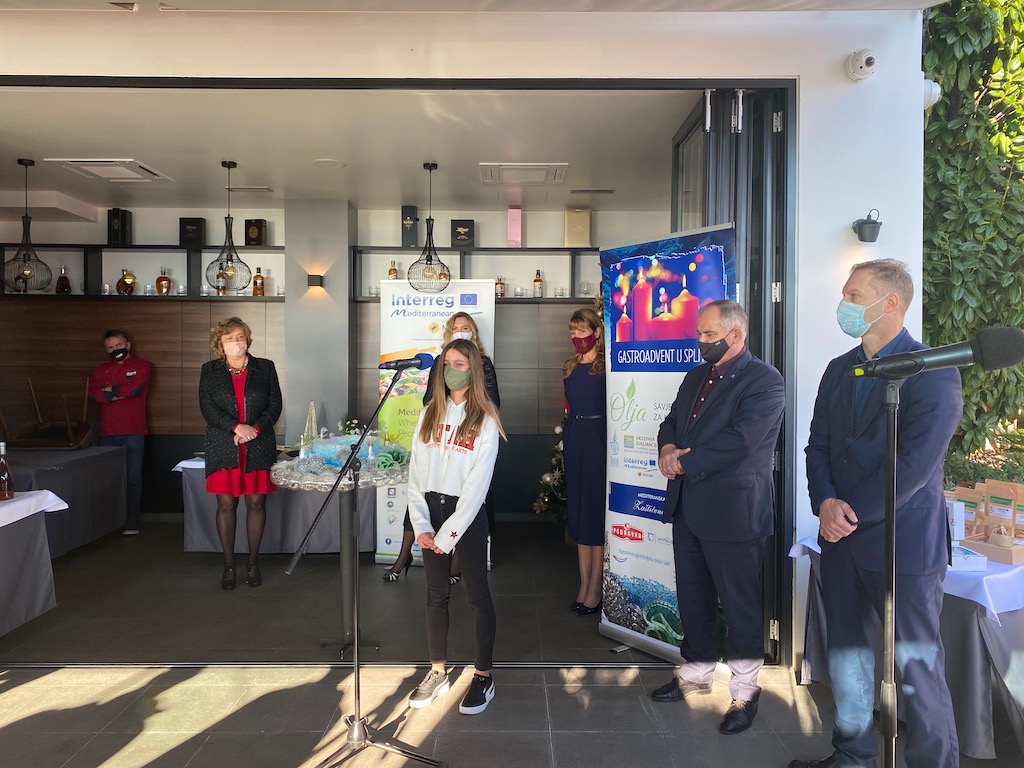
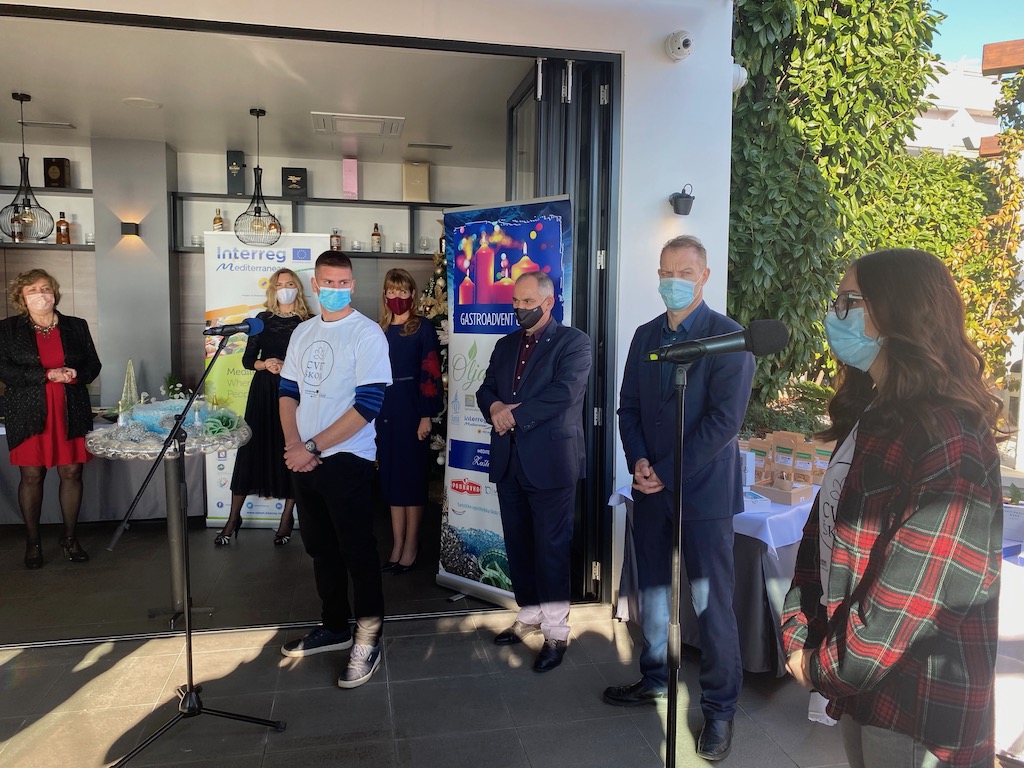
This time, the Hvar High School and Petar Hektorović Elementary School in Stari Grad presented their products: sea salt infused with Plavac Mali and citrus zest, and traditional honey and black pepper biscuits 'paprenjak'.
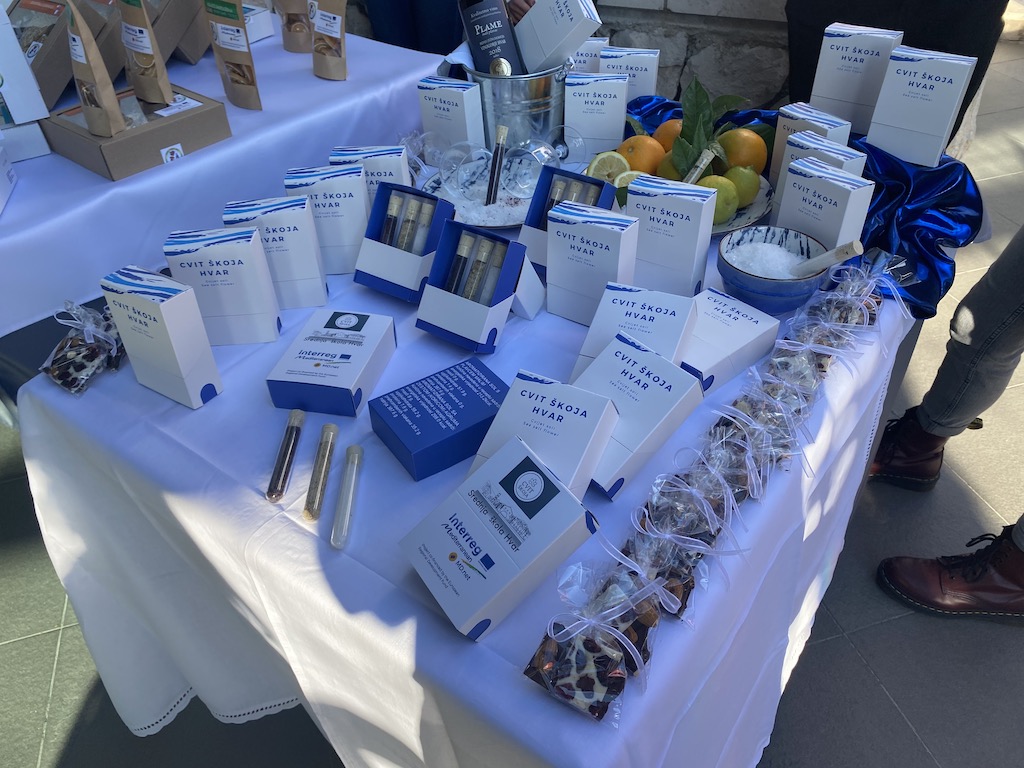
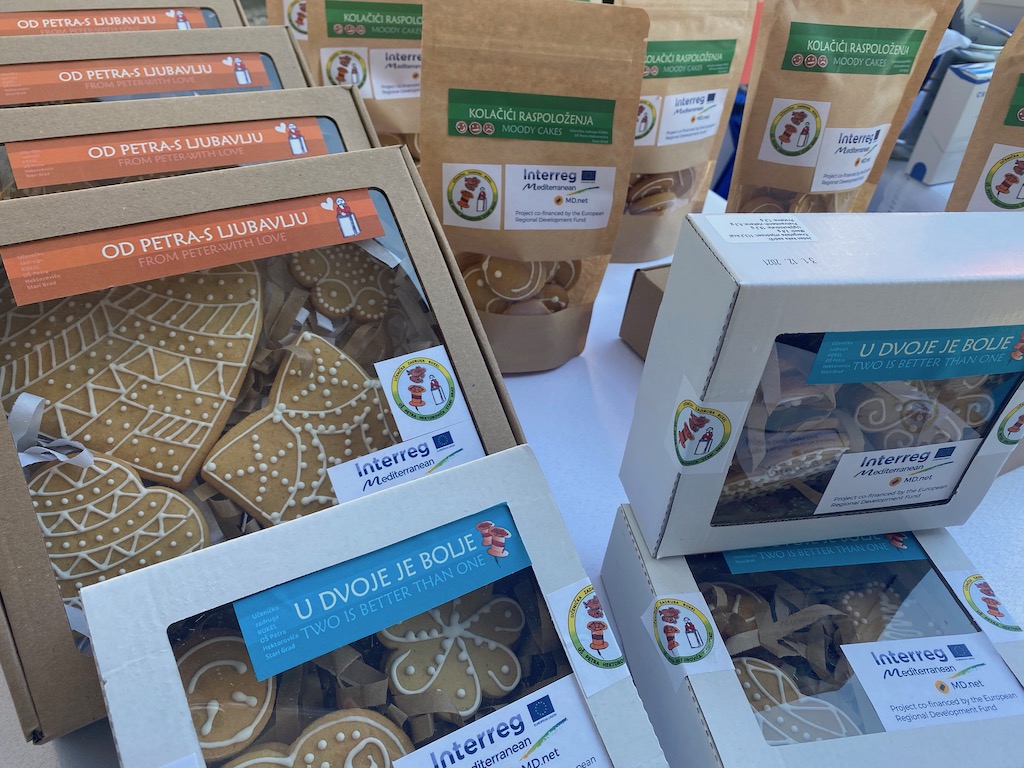
All products presented at Gastroadvent were evaluated, and the winner will compete at an international competition in Seville, Spain, next year. Split-Dalmatia County prefect Blazenko Boban announced High school "Brac" in Supetar with their 'varenik' tomato sauce as the winner!
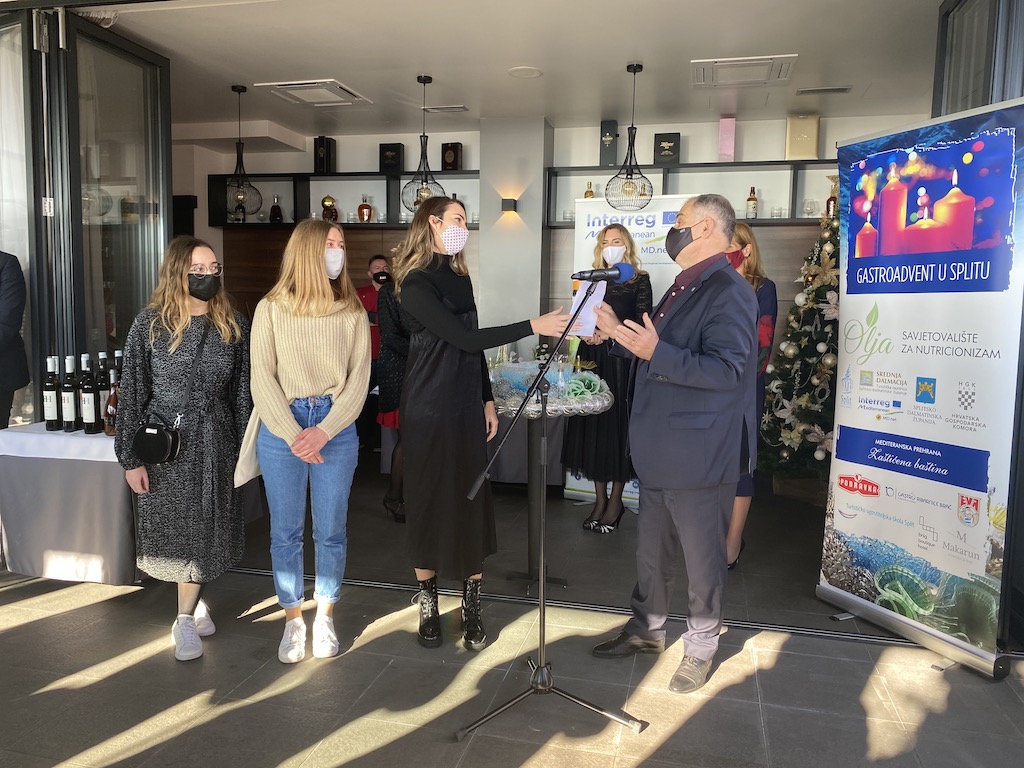
Split Gastroadvent is held every Advent Sunday at a new location, honoring a different group of journalists.
To read more about lifestyle in Croatia, follow TCN's dedicated page.


